|
Originally published: Morning Star Online on July 5, 2024 by Roger McKenzie (more by Morning Star Online) | (Posted Jul 10, 2024) THE Chinese autonomous region of Xinjiang is at the geographical centre of Eurasia. The region borders eight other countries which makes it a vital part of Chinese plans for the greater integration of Eurasia and the westward opening up of this nation of 1.4 billion people. The Comprehensive Bonded Zone in the city of Kashi is central to co-ordinating the booming trade links that China has established with its immediate neighbours. Xinjiang, one of the largest regions in China, is a gateway to Russia, India, Pakistan, Mongolia, Kyrgyzstan, Tajikistan, Kazakhstan and Afghanistan. It occupies around 643,000 square miles of China–a space larger than six Britains. Its sparse population of approximately 25 million is mainly Muslim and made up of around 65 different ethnic groups including Chinese Han, Uighurs, Kazakhs and Hui, among others. I lost count of the number of mosques that I saw during my recent trip. I visited a thriving Islamic Centre in the city of Urumqi–which has received millions in funding from the Chinese government for its development to teach its around 1,000 students. I had the honour of sitting in the mosque’s main hall attached to the centre alongside the imam and hearing him talk about the support the centre had received from the government. I also visited the magnificent and extremely busy Id Kah Mosque in the city of Kashi. Both times the imams took the time from their busy schedules to speak about how grateful they and worshippers at the mosque are for the support provided by the government. They told me about how the right to worship any religion is considered a private matter in China and protected in law. That’s why it provides funds to a wide range of religious bodies representing Muslims, Buddhists and Christians among others. None of this is recognised in the West. Instead tall tales are told about supposed widespread religious persecution. In particular Western politicians and their stenographers in the corporate media continue to spin untruths about the treatment of religious minorities. To be crystal clear: at no time did I witness any attempt to block anyone from being able to worship according to the Islamic faith or, for that matter, any other religion. I heard no criticism of the government over religious persecution from senior religious figures or anyone else I met during my visit. I was never stopped from speaking with anyone in any of the large crowds of people that I found myself in across the region. Having made the effort to actually visit five cities in 10 days in the region rather than pontificate from thousands of miles away, I can honestly say that for a country that supposedly routinely oppresses ethnic minorities China seems to spend an inordinate amount of time celebrating them. By that, I don’t mean the half-arsed patronising so-called celebration of diversity that now appears customary across Britain. Leading figures in Britain trip over themselves to take a knee and say how much black lives matter to them but continue to do nothing about racism in their organisations. It doesn’t look to me like a Black History Month-type gig where a big show is made for a short tokenistic period and then ignored for the rest of the time. Talking up the richness of the region’s cultural diversity wasn’t just an isolated thing in Xinjiang–it was everywhere. Celebrations of the Islamic culture were everywhere for anyone to see. I can already hear some saying that either I wasn’t looking hard enough or I was having the wool pulled over my eyes. I did look hard and I don’t believe an elaborate hoax was being played on me. I spoke with lots of people in private with no restrictions placed on me whatsoever. In fact, my dreadlocks, and I dare say, the colour of my skin, meant I was a target of curiosity, especially among the young, many of who wanted to come and chat and have a photo taken with me. That was frankly the most uncomfortable thing about the trip! What I saw was lots of people going about their business in much the same way as I have seen people trying to do in many parts of the world. I met many Communist Party officials who were questioned over the allegations made against them and their country. All of them said the only way to counter the propaganda war being waged against them was for people to come and see for themselves. They told me how hard they were working to open up the region to more tourism so that people could experience this beautiful area but also so more people could bear witness to the truth about them. So why is this propaganda war being waged against China in general and in particular against Xinjiang? The geographical position of the region provides the answer. As the centre of the Silk Road renaissance, the region will be the focal point of Chinese trade and its economic heartbeat. It means the continuing economic growth of China is disproportionately linked to Xinjiang. Its trade routes through its eight neighbours to its wider partners will be critical to sell Chinese-made goods as well as to buy the resources needed to continue to power the country’s economy. The U.S. is the world’s leading economy and wants to keep it that way. Its doctrine of Full Spectrum Dominance asserts that it will use any means necessary to maintain the pre-eminence of U.S. capital. I think we can take this to mean that the U.S. will not hesitate to spread misinformation about China. After all, it’s not as if the U.S. does not have form for this type of behaviour. They have been doing it for years, particularly across Africa and Central America where they buy organisations to ferment internal dissent against governments deemed not to be compliant. Sprinkled with an always unhealthy dose of sinophobia the move by the U.S. to undermine the reputation of China has largely economic foundations and false allegations of mistreatment against ethnic minorities–particularly the Uighurs–are completely without foundation. On the contrary, there seems to me to be far more evidence of the Chinese at a national and regional level actively celebrating cultural diversity as well as striving to put in place the economic prosperity that looks as though it is undermining attempts by terrorist groups–likely funded by the West–to sow discontent in Xinjiang. I will talk about this and the allegations of forced labour in some detail in the second part of this three series about my visit to China. In the meantime, to anyone reading this article in disbelief and who believes that either I am lying or have been the victim of what would be a truly elaborate hoax my suggestion is: go and see for yourself. It’s a long way away but I honestly believe you will be surprised by the wonderful vibrant people and cities that will greet you. This is the first of three eyewitness articles from Morning Star international editor Roger McKenzie on his recent visit to China. AuthorRoger McKenzie This article was produced by Morning Star. Archives July 2024
0 Comments
2/28/2024 China’s economy is still far out growing the U.S. – contrary to Western media “fake news. By: John RossRead NowGDP data for China, the U.S., and the other G7 countries for the year 2023 has now been published. This makes possible an accurate assessment of China’s, the U.S., and major economies performance—both in terms of China’s domestic goals and international comparisons. There are two key reasons this is important.
The factual situation is that China’s economy, as it heads into 2024, has far outgrown all other major comparable economies. This reality is in total contradiction to claims in the U.S. media. This in turn, therefore, demonstrates the extraordinary distortions and falsifications in the U.S. media about this situation. It confirms that, with a few honourable exceptions, Western economic journalism is primarily dominated by, in some cases quite extraordinary, “fake news” rather than any objective analysis. Both for understanding the economic situation, and the degree of distortion in the U.S. media, it is therefore necessary to establish the facts of current international developments. China’s growth targets Starting with China’s strategic domestic criteria, it has set clear goals for its economic development over the next period which will complete its transition from a “developing” to a “high-income” economy by World Bank international standards. In precise numbers, in 2020’s discussion around the 14th Five Year plan, it was concluded that for China by 2035: “It is entirely possible to double the total or per capita income”. Such a result would mean China decisively overcoming the alleged “middle income trap” and, as the 20th Party Congress stated, China reaching the level of a “medium-developed country by 2035”. In contrast, a recent series of Western reports, widely used in anti-China propaganda, claim that China’s economy will experience sharp slowdown and will fail to reach its targets. Self-evidently which of these outcomes is achieved is of fundamental importance for China’s entire national rejuvenation and construction of socialism—as Xi Jinping stated, China’s: “path takes economic development as the central task, and brings along economic, political, cultural, social, ecological and other forms of progress.” But the outcome also affects the entire global economy—for example, a recent article by the chair of Rockefeller International, published in the Financial Times, made the claim that what was occurring was China’s “economy… losing share to its peers”. The Wall Street journal asserted: “China’s economy limps into 2024” whereas in contrast the U.S. was marked by a “resilient domestic economy.” The British Daily Telegraph proclaimed China has a “stagnant economy”. The Washington Post headlined that: “Falling inflation, rising growth give U.S. the world’s best recovery” with the article claiming: “in the United States… the surprisingly strong economy is outperforming all of its major trading partners.” This is allegedly because: “Through the end of September, it was more than 7 percent larger than before the pandemic. That was more than twice Japan’s gain and far better than Germany’s anaemic 0.3 percent increase.” Numerous similar claims could be quoted from the U.S. media. U.S. use of “fake news”Reading U.S. media claims on these issues, and comparing them to the facts. it is impossible to avoid the conclusion that what is involved is deliberate “fake news” for propaganda purposes—as will be seen, the only alternative explanation is that it is disgracefully sloppy journalism that should not appear in supposedly “quality” media. For example, it is simply absurdly untrue, genuinely “fake news”, that the U.S. is “outperforming all of its major trading partners”, or that China has a “stagnant economy”. Anyone who bothers to consult the facts, an elementary requirement for a journalist, can easily find out that such claims are entirely false—as will be shown in detail below. To first give an example regarding U.S. domestic reports, before dealing with international aspects, a distortion of U.S. economic growth in 2023 was so widely reported in the U.S. media that it is again hard to avoid the conclusion that this was a deliberate misrepresentation to present an exaggerated view of U.S. economic performance. Factually, the U.S. Bureau of Economic Analysis, the U.S. official statistics agency for economic growth, reported that U.S. GDP in 2023 rose by 2.5%—for comparison China’s GDP increased by 5.2%. But a series of U.S. media outlets, starting with the Wall Street Journal, instead proclaimed that the “U.S. economy grew 3.1% over the last year”. This “fake news” on U.S. growth was created by statistical “cherry picking”. In this case comparing only the last quarter of 2023 with the last quarter of 2022, which was an increase of 3.1%, but not by taking GDP growth in the year as a whole “last year”. But U.S. growth in the earlier part of 2023 was far weaker than in the 4th quarter—year on year growth in the 1st quarter was only 1.7% and in the 2nd quarter only 2.4%. Taking into account this weak growth in the first part of the year, and stronger growth in the second, U.S. growth for the year as a whole was only 2.5%—not 3.1%. As it is perfectly easy to look up the actual annual figure, which was precisely published by the U.S. statistical authorities, it is hard to avoid the conclusion that this was a deliberate distortion in the U.S. media to falsely present a higher U.S. growth rate in 2023 than the reality. It may be noted that even if U.S. GDP growth had been 3.1% then China’s was much higher at 5.2%. But the real data makes it transparently clear that China’s economy grew more than twice as fast as the U.S. in 2023—showing at a glance that claims that the U.S. is “outperforming all of its major trading partners”, or that China has a “stagnant economy” were entirely “fake news”. Many more examples of U.S. media false claims could be given, but the best way to see the overall situation is to systematically present the overall facts of growth in the major economies. What China has to do to achieve its 2035 goalsTurning first to assessing China’s economic performance, compared to its own strategic goals of doubling GDP and per capita GDP between 2020 and 2035, it should be noted that in 2022 China’s population declined by 0.1% and this fall is expected to continue—the UN projects China’s population will decline by an average 0.1% a year between 2020 and 2035. Therefore, in economic growth terms, the goal of doubling GDP growth to 2035 is slightly more challenging than the per capita target and will be concentrated on here—if China’stotal GDP goal is achieved then the per capita GDP one will necessarily be exceeded. To make an international comparison of China’s growth projections compared with the U.S., the U.S. Congressional Budget Office (CBO), responsible for the official growth projections for the U.S. economy on which its government’s policies rely, estimates there will be 1.8% annual average U.S. GDP growth between 2023 and 2023—with this falling to 1.6% from 2034 onwards. This figure is slightly below the current U.S. 12-year long term annual average GDP growth of 2.3%—12 being the number of years from 2023 to 2035. To avoid any suggestion of bias against the U.S., and in favour of China, in international comparisons here the higher U.S. number of 2.3% will be used. The results of such figures are that if China hits its growth target for 2035, and the U.S. continues to grow at 2.3%, then between 2020 and 2035 China’s economy will grow by 100% and the U.S. by 41%—see Figure 1. Therefore, from 2020 to 2035, China’s economy would grow slightly more than two and a half times as fast as the U.S. The strategic consequences of China’s economic growth rate The international implications of any such growth outcomes were succinctly summarised by Martin Wolf, chief economics commentator of the Financial Times. If China’s economy continues to grow substantially faster than Western ones, and it achieves the status of a “medium-developed country by 2035”, then, in addition to achieving high domestic living standards, China’s will become by far the world’s largest economy. As Wolf put it: “The implications can be seen in quite a simple way. According to the IMF, China’s gross domestic product per head (measured at purchasing power) was 28 per cent of U.S. levels in 2022. This is almost exactly half of Poland’s relative GDP per head… Now, suppose its [China’s] relative GDP per head doubled, to match Poland’s. Then its GDP would be more than double that of the U.S. and bigger than that of the U.S. and EU together.” By 2035 such a process would not be completed on the growth rates already given, and measuring by Wolf’s chosen measure of purchasing power parities (PPPs) China’s economy by 2035 would be 60% bigger than that of the U.S. But even that would make China by far the world’s largest economy. Wolf equally accurately notes that the only way that such an outcome would be prevented from occurring is if China’s economy slows down to the growth rate of a Western economy such as the U.S. Clearly, if China’s economic growth slows to that of a Western economy, then, naturally, China will never catch up with the West—it will necessarily simply stay the same distance behind. Therefore. as Wolf accurately puts it the outcomes are: What is the economic future of China? Will it become a high-income economy and so, inevitably, the largest in the world for an extended period, or will it be stuck in the ‘middle income’ trap, with growth comparable to that of the U.S.? The progress in achieving China’s strategic economic goalsTurning to the precise figure required to achieve China’s 2035 target, China’s goal of doubling GDP required average annual growth of at least 4.7% a year between 2020 and 2035. So far China, as Figure 1 shows, is ahead of this goal—annual average growth in 2020-2022 was 5.7%, meaning that from 2023-2035 annual average 4.6% growth is now required. China’ 5.2% GDP increase in 2023 therefore once again exceeded the required 4.6% growth rate to achieve its 2035 goal—as shown in Figure 1. From 2020 to 2023 the required total increase in China’s GDP to hit its 2035 target was 14.9%, whereas in fact its growth was 17.5%. This is in line with the 45-year record since 1978’s Reform and Opening Up, during which entire period the medium/long term targets set by China have always been exceeded. Therefore. to summarise, there is no sign whatever in 2023, or indeed in the period since 2020, that China will fail to meet its target of doubling GDP between 2020 and 2035—China is ahead of this target. Such a 4.6% growth rate would easily ensure China becomes a high-income economy by World Bank criteria well before 2035—the present criteria for this being per capita income of $13,846. It should be noted, as discussed in in detail below, that a clear international conclusion flows from this necessary 4.6% annual average growth rate for China to achieve its strategic goals. It means that China must continue to grow much faster than the Western economies throughout this period to 2035—that is in line with China’s current trend. However, if China were to slow down to the growth rate of a Western economy, then it will fail to achieve its strategic goals to 2035, may not succeed in becoming a high income economy, and will necessarily remain the same distance behind the West as now. The implications of this will be considered below. Systematic comparisons not “cherry picking”Having considered China’s performance in 2023 terms of achieving its own domestic strategic goals we will now turn to actual results and a comparison of China with other international economies. This immediately shows the factual absurdity, the pure “fake news” of claims such as that the U.S. has “the world’s best recovery“ and “the United States… is outperforming all of its major trading partners.” On the contrary China has continued to far outgrow the U.S. economy not only in 2023 but in the entire last period. China’s outperformance of the other major Western economies, the G7, is even greater that of the U.S. Entirely misleading claims regarding such international comparisons, used for propaganda as opposed to serious analysis, are sometimes made because data is taken from extremely short periods of time which are taken out of context—unrepresentative statistical “cherry picking” or, as Lenin put it, a statistical “dirty business”. Such a method is always erroneous, but it is particularly so during periods which were affected by the impact of the Covid pandemic as these caused extremely violent short-term economic fluctuations related to lock downs and similar measures. China’s assertion of superior growth is based on its overall performance, not an absurd claim that it outperforms every other economy, on every single measure, in every single period! Therefore, in making international comparisons, the most suitable period to take is that for since the beginning of the pandemic up to the latest available GDP data. As comparison of China with the U.S. is the most commonly made one, and particularly concentrated on by the U.S. media campaign, this will be considered first. China’s and the U.S.’s growth in 2023 It was already noted that in 2023 China’s GDP grew by 5.2% and the U.S. by 2.5%—China’s economy growing more than twice as fast as the U.S. But it should also be observed that 2023 was an above trend growth year for the U.S.—U.S. annual average growth over a 12-year period is only 2.3% and over a 20-year period it is only 2.1%. Therefore, although in 2023 China’s economy grew more than twice as fast as the U.S., that figure is actually somewhat flattering for the U.S. Figure 2shows that in the overall period since the beginning of the pandemic China’s economy has grown by 20.1% and the U.S. by 8.1%—that is China’s total GDP growth since the beginning of the pandemic was two and half times greater than the U.S. China’s annual average growth rate was 4.7% compared to the US’s 2.0%. Economic performance of China and the three major global economic centres Turning to wider international comparisons than the U.S. such data immediately shows the extremely negative situation in most “Global North” economies and China’s great outperformance of them. To start by analysing this in the broadest terms, Figure 3 shows the developments in the world’s three largest economic centres—China, the U.S., and the Eurozone. These three together account for 57% of world GDP at current exchange rates and 46% in purchasing power parities (PPPs). No other economic centre comes close to matching their weight in the world economy. Regarding the relative performance of these three major economic centres, at the time of writing data has not been published for the Euro Area for the whole year of 2023 —which would be the ideal comparison. However, it has been published for the the Euro area for the four quarters of 2023 individually and trends can be calculated on that basis. These show that In the four years to the 4th quarter of 2023, covering the period since the beginning of the pandemic, China’s economy has grown by 20.1%, the U.S. by 8.2%, and the Eurozone by 3.0%. China’s economy therefore grew by two and a half times as fast as the U.S. while the situation of the Eurozone could accurately be described as extremely negative with annual average GDP growth in the last four years of only 0.7%. Such data again makes it immediately obvious that claims in the Western media that China faces economic crisis, and the Western economies are doing well is entirely absurd—pure fantasy propaganda disconnected from reality. Relative performance of China and the G7 Turning to analysing individual countries, then comparing China to all G7 states, i.e. the major advanced economies, shows the situation equally clearly—see Figure 4. Data for China and all G7 economies has now been published for the whole of 2023. The huge outperformance by China of all the major advanced economies is again evident. Over the four years since the beginning of the pandemic China’s economy grew by 20.1%, the U.S. by 8.1%, Canada by 5.4%, Italy by 3.1%, the UK by 1.8%, France by 1.7%, Japan by 1.1% and Germany by 0.7%. In the same period China’s economy therefore grew two and a half times as fast as the U.S., almost four times as fast as Canada, almost seven times as fast as Italy, 11 times as fast as the UK, 12 times as fast as France, 18 times as fast as Japan and almost 29 times as fast as Germany. In terms of annual average GDP growth during this period China’s was 4.7%, the U.S. 2.0%, Canada 1.3%, Italy 0.8%, the UK 0.4%, France 0.4%, Japan 0.3% and Germany 0.2%. It may therefore be seen that China’s economy far outperformed the U.S., while the performance of all other major G7 economies may be quite reasonably described as extremely negative—all having annual average economic growth rates of around or even under 1%. Comparison of China to developing economies A comparison using the IMF’s January 2024 projections can also be made to the major developing economies—the BRICS. Figure 5 shows this, using the factual result for China and the IMF projections for the other countries. Over the period since the start of the pandemic, from 2019-2023, China’s GDP grew by 20.1%, India by 17.5%, Brazil by 7.7%, Russia by 3.7% and South Africa by 0.9%. This data confirms that the major Global South economies are growing faster than most of the major Global North economies, which is part of the rise of the Global South and draws attention to the good performance of India. But China grew more than two and half times more than all the BRICS economies except India—China’s growth was 15% greater than India’s. It should be noted that India is at a far lower stage of development than the other BRICS economies—all the others fall in the World Bank classification of upper middle-income economies whereas India falls into the lower middle income group. Comparison of China’s growth to Western economies Finally, this outperformance by China casts light on what is necessary to achieve its own 2035 strategic targets. China’s 4.6% growth rate necessary to meet these goals means that it must continue to maintain a growth rate far higher than Western economies—Figure 6 shows this in overall terms in addition to individual comparisons given to major economies above. Whereas China must achieve an annual average 4.6% growth rate the median growth rate of high income “Western” economies is only 1.9%, the U.S. is 2.3%, and the median for developing economies is 3.0%.That is, to achieve its 2035 goals China must grow twice as fast as the long term trend of the U.S., almost two and a half times as fast as the median for high income economies, and more than 50% faster than the median for developing economies. As already seen, China is more than achieving this. But such facts immediately show why it is an extremely misleading when proposals are made that China should move towards the macro-economic structure of a Western economy. If China adopts the structure of a Western economy then, of course, China will slow down to the same growth rate as Western economies—and therefore fail to achieve its 2035 economic goals. China will be precisely stuck in the negative outcome of the situation accurately diagnosed by Martin Wolf. What is the economic future of China? Will it become a high-income economy and so, inevitably, the largest in the world for an extended period, or will it be stuck in the ‘middle income’ trap, with growth comparable to that of the U.S.? Conclusion In conclusion, it addition to objectively analysing 2023’s economic results, it is also necessary in the light of this factual situation to make a remark regarding Western, in particular U.S. “journalism”. None of the data given above is secret, all is available from public readily accessible sources. In many cases it does not even require any calculations and simply published data can be used. But the U.S. media and journalists report information that is systematically misleading and in many cases simply untrue. While it lagged China in creating economic growth the U.S. was certainly the world leader in creating “fake economic news”! What was the reason, what attitude should be taken to it? First, to avoid accusations of distortion, it should be stated that there were a small handful of Western journalists who refused to go along with this type of distortion and fake news. For example Chris Giles, the Financial Times economics commentator, in December, sharply attacked “an absurd way to compare economies… among people who should know better.” Giles did not do this because of support for China but because, quite rightly, he warned that spreading false or distorted information led to serious errors by countries doing so: “Coming from the UK, which lost its top economic dog status in the late 19th century but still has some delusions of grandeur, I can understand American denialism… But ultimately, bad comparisons foster bad decisions.” But the overwhelming majority of U.S. and Western journalists continued to spread fake news. Why? First, the fact that identical distortions and false information appeared absolutely simultaneously across a very wide range of media makes it clear that undoubtedly U.S. intelligence services were involved in creating it—i.e. part of the misrepresentation and distortions were entirely deliberate and conscious, aimed at disguising the real situation. Second, another part was merely sloppy journalism—that is journalists who could not be bothered to check facts. Third, supporting both of these factors was “white Western arrogance”—an arrogant assumption, rooted in centuries of European and European descended countries dominating the world, that the West must be right. Therefore, such arrogance made it impossible to acknowledge or report the clear facts that China’s economy is far outperforming the West. But whether it was conscious distortion, sloppy journalism, or conscious or unconscious arrogance, in all these cases no respect should be given to the Western “quality” media. It is not trying to find out the truth, which is the job of journalism, it is simply spreading false propaganda. It remains a truth that if a theory and the real world don’t coincide there are only two courses that can be taken. The first, that of a sane person, is to abandon the theory. The second, that of a dangerous one, is to abandon the real world—precisely the danger that Chris Giles pointed to. What has been appearing in the Western media about international economic comparisons regarding China is precisely abandonment of the real world in favour of systematic fake news. This is a shortened version of an article that originally appeared in Chinese at Guancha.cn. About John Ross is a senior fellow at Chongyang Institute for Financial Studies, Renmin University of China. He was formerly director of economic policy for the mayor of London. Republished from Monthly Review Archives February 2024 10/12/2023 A decade of BRI development transforms China's Xinjiang region into a core area of the Silk Road Economic Belt By: Li Xuanmin in Urumqi and HorgosRead NowA decade of BRI development transforms the region into a core area of the Silk Road Economic Belt On Sunday morning, workers were harvesting grapes on farmland in Yining county in Kazak Autonomous Prefecture of Ili, Northwest China's Xinjiang Uygur Autonomous Region. The freshly-picked fruit was then uploaded onto a truck, headed to Kazakhstan via highway, and within six hours, it would be delivered to the Kazakhstani market and sold to the local consumers. "It used to take two to three days to ship goods from Xinjiang to Kazakhstan, but the time has been reduced to only half a day since the development of the Belt and Road Initiative (BRI), under which connectivity has been facilitated and the efficiency of customs clearance has been largely improved," Yu Chengzhong, chairman of Horgos Jinyi International Trade Co, told the Global Times. Yu's company is growing quickly thanks to fruit exports from Xinjiang, including apples, nectarines, grapes, peppers, tomatoes, prunes and cucumbers to markets in Central Asia, Russia, and Southeast Asian countries such as Thailand and Vietnam. It is expected that the company's export value to Central Asia could climb up to $1.2 billion this year, almost doubling from $683 million recorded last year. As business expands, the company is now constructing a 500,000-square-meter overseas warehouse in Alma-Ata in southern Kazakhstan, and it is scheduled to be put into use in October 2024. "It will be built into a distribution center covering other Central Asian countries and Russia. We will also set up an exhibition area for China-produced vehicles, as those autos have been gaining popularity in those markets," Yu added Yu's company is one among the thousands of firms in Xinjiang whose businesses have been taking off under the BRI. As the China-proposed BRI being materialized over the past decade, Xinjiang - which sits at China's westernmost frontier bordering eight countries including Mongolia, Russia, Kazakhstan, Kyrgyzstan, Tajikistan, Afghanistan, Pakistan and India - has been transformed from a relatively closed inland region to a frontier of opening-up. A view of China- Kazakhstan International Cooperation Center in Horgos, Northwest China's Xinjiang Uygur Autonomous Region on September 16. Photo: Li Xuanmin/GT As an important node along the BRI, the region, leveraging its strategic location, has built up an overarching rail, road and flight transportation network that not only fosters closer trade and economic ties with Central Asia and Europe, but also shapes itself into a bridgehead for westward opening-up, company representatives and local officials noted. "What we felt most during the past 10 years is that Xinjiang is no longer a remote region, but it is now becoming a core area of the Silk Road Economic Belt. We're a pivotal international logistic hub placed at the Asia-Europe 'golden passage.' And the region is set to be designated with more important missions in the country's further opening-up," Zhao Yi, general manager assistant at International Land Port in Urumqi, told the Global Times. Flourishing foreign trade In the first eight months of 2023, Xinjiang's foreign trade surged by 51.2 percent year on year, reaching 219.19 billion yuan (around $30 billion). Xinjiang has engaged in foreign trade with 170 countries and regions this year. Its foreign trade with five Central Asian countries grew by 59.1 percent year-on-year to 176.64 billion yuan, accounting for 80.6 percent of the regional total, customs data showed. "The main cargo shipped from Xinjiang to the international market are typically ketchup, agricultural products, textiles, PVC, chemical raw materials, equipment and machineries," Zhao explained, as he guided the loading of containers into a China-Europe freight train set to depart for Kazakhstan on Sunday afternoon. As of early September, the inbound and outbound China-Europe freight trains passing through Xinjiang have totaled 10,017 this year, up 10.1 percent year-on-year, according to China Railway Urumqi Group Co Ltd. In the first seven months of 2023, the International Land Port in Urumqi opened 772 China-Europe freight trains, up 9.35 percent year-on-year. The rail routes connect with 26 cities in 19 countries. The port also serves as an important transit point for goods across China and from Southeast Asia to be transported to Europe. Ding Zhijun, an official from the Urumqi Economic and Technological Development Zone, told the Global Times that since the beginning of this year, goods from Laos, such as sugar and rubber, have been transferred at the port via China-Laos Railway and other inland railway routes, and then are assembled and delivered to European markets. "The BRI has driven up Xinjiang's foreign trade, which is a boon for local industries. It is also conducive to Xinjiang's economic development and boosting employment opportunities," Ding said. He added that looking to the future, the port authorities plan to set up a textile trading center within the port, to facilitate the exports and trade of clothes and other textile products. Opening to the West The hustle and bustle of international cooperation in Xinjiang is also seen throughout the China-Kazakhstan International Cooperation Center in Horgos, which is home to China's first cross-border free trade zone. When Global Times reporters visited the center at a weekend in mid-September, streams of tourists were standing at the border gate and taking photos, and stores were crowded with merchants and buyers. "In the initial stage when we set up the shopping mall in 2015, most merchants were from Kazakhstan and China. But now, with the steady progress of BRI, the center has become a hot destination for foreign investment, and there are more vendors from other Central Asia countries as well as Russia and South Korea," Ji Gang, general manager of Jindiao Central Square, a shopping mall at the cooperation center, told the Global Times. According to Ji, the center has just held a commercial fair for Central Asian business leaders in August, during which a number of deals were signed, including equipment purchase agreements. Some Chinese and Kazakhstani companies also reached initial agreement to open factories in Kazakhstan. "With unique geographic advantage, Xinjiang has become an important gateway for China to open up to the West. It is worth noting that the radiation effect of the region is not confined to China, but also to Central Asia and Europe, which would in turn provide Xinjiang with more development opportunities," Ji added. Zhao also said that the International Land Port is planning to open more China-Europe freight train routes that directly connect the region to Europe. "In particular, we aim to set up some premium routes to transport electronic components and local specialty goods via the China-Europe railway express. This year, we are also actively engaging with Kazakhstan to establish business partnerships and enhance customs clearance efficiency," Zhao noted. AuthorLi Xuanmin in Urumqi and Horgos This article was produced by Global Times. Archives October 2023 With over 20 million inhabitants each, Shanghai and Beijing are among the “hypercities” of the Global South, including Delhi, São Paulo, Dhaka, Cairo, and Mexico City, far surpassing the “megacities” of the Global North like London, Paris, or New York1. Walking the streets in China’s cities, you will however, quickly notice one marked difference – the absence of large slums or pervasive homelessness that is so common to most of the rest of the world. Why did mass urbanization not create large slums in China?When reform and opening up began in the late 1970s, 83 percent of China’s population lived in the countryside. By 2021, the proportion of the rural population had fallen to 36 percent. During this period of mass urbanization, over 600 million people migrated from rural areas to cities. Today, there are 296 million internal “migrant workers” (农民工, nóngmín gōng), comprising over 70 percent of the country’s total workforce2. Migrant workers became the economic engine of China’s rapid growth, which created the world’s largest middle class of 400 million people. This historic migration came with many challenges, including the emergence of “urban villages” that had poor living conditions and inadequate infrastructure. Although basic amenities – such as running water, electricity, gas, and communications – were provided, sanitation, public services, fire safety, and other such amenities resembled that of rural villages. Due to lower rents and the lack of other affordable housing, urban villages are largely inhabited by migrant workers. With the acceleration of urbanization in the 2000s, the Chinese government began to promote large-scale transformation of the old areas of the cities, focusing on renovation of historically deteriorated neighborhoods and the removal of dangerous housing. Between 2008 and 2012, 12.6 million households in urban villages were rebuilt nationwide3. At the same time, efforts were made to construct public rental or low-rent housing. For instance, in Shanghai today, families of three or more people with a monthly income of less than 4,200 yuan per person can apply for low-rent housing, with the monthly rent being just a few hundred yuan (or five percent of monthly household income). In 2022, the central government announced the construction of 6.5 million units of low-cost rental housing in 40 cities, representing 26 percent of the total new housing supply in the 14th Five-Year Plan (2021-2025)4. Indeed the explosion of rural-to-urban migration in recent decades is not a phenomenon unique to China. While understanding that there are different definitions of “slums” used by countries and international organizations, they all point to the same tendency: since the 1970s, slum growth outpaced urbanization rates across the Global South. China’s efforts to upgrade existing precarious housing or build new affordable housing does not, however, explain why China did not develop slums like in so many other countries. Urbanization in China, therefore, must be understood within the context of socialist construction. What is the “hukou” system and what does it have to do with socialism? One unique characteristic of China’s urbanization process is that, although policies encouraged migration to cities for industrial and service jobs, rural residents never lost their access to land in the countryside. In the 1950s, the Communist Party of China (CPC) led a nationwide land reform process, abolishing private land ownership and transforming it into collective ownership. During the economic reform period, beginning in 1978, a “Household Responsibility System” (家庭联产承包责任制 jiātíng lián chǎn chéngbāo zérèn zhì) was created, which reallocated rural agricultural land into the hands of individual households. Though agricultural production was deeply impacted, collective land ownership remained and land was never privatized. Today, China has one of the highest homeownership rates in the world, surpassing 90 percent, and this includes the millions of migrant workers who rent homes in other cities. This means that when encountering economic troubles, such as unemployment, urban migrant workers can return to their hometowns, where they own a home, can engage in agricultural production, and search for work locally. This structural buffer plays a critical role in absorbing the impacts of major economic and social crises. For example, during the 2008 global financial crisis, China’s export-oriented economy, especially of manufactured goods, was severely hit, causing about 30 million migrant workers to lose their jobs. Similarly, during the Covid-19 pandemic, when service and manufacturing jobs were seriously impacted, many migrant workers returned to their homes and land in the countryside. Beyond land reform, a system was created to manage the mass migration of people from the countryside to the cities, to ensure that the movement of people aligned with the national planning needs of such a populous country. Though China has had some form of migration restriction for over 2,000 years, in the late 1950s, the country established a new “household registration system” (户口 or hùkǒu) to regulate rural-to-urban migration. Every Chinese person has an assigned urban or rural hukou status that grants them access to social welfare benefits (subsidized public housing, education, health care, pension, and unemployment insurance, etc.) in their hometown, but which are restricted in the cities they move to for work. While reformation of the hukou system is ongoing, the lack of urban hukou status forces many migrant parents to spend long periods away from their families and they must leave their children in their grandparents’ care in their hometowns, referred to as “left-behind children” (留守儿童 liúshǒu értóng). Though the number has been decreasing over the years, there are still an estimated seven million children in this situation. Today, 65.22 percent of China’s population lives in cities, but only 45.4 percent have urban hukou. Although this system deterred the creation of large urban slums, it also reinforced serious inequities of social welfare between urban and rural areas, and between residents within a city based on their hukou status. How does the Chinese government deal with homelessness? In the early 2000s, the issues of residential status, rights of migrant workers, and treatment of urban homeless people became a national matter. In 2003, the State Council – the highest executive organ of state power – issued the “Measures for the Rescue and Management of Itinerant and Homeless in Urban Areas”5. The new regulation created urban relief stations providing food rations and temporary shelters, abolished the mandatory detention system of people without hukou status or housing, and placed the responsibility on the local authorities for finding housing for homeless people in their hometowns. Under these measures, cities like Shanghai have set up relief stations for homeless people. When public security – the local police – and urban management officials encounter homeless people, they must assist them in accessing nearby relief stations. All costs are covered by the city’s fiscal budget. For example, the relief management station in Putuo District (with the fourth lowest per capita GDP of Shanghai’s 16 districts and a resident population of 1.24 million), provided shelter and relief to an average of 24.3 homeless people a month from June 2022 to April 2023, which could include repeated cases6. Relief stations provide homeless people with food and basic accommodations, help those who are seriously ill access healthcare, assist them to return to the locations of their household registration by contacting their relatives or the local government, and arrange free transportation home when needed. Upon returning home, the local county-level government is responsible to help the homeless people, including contacting relatives for care and finding local employment. For a very small number of people who are elderly, have disabilities, or do not have relatives nor the ability to work, the local township people’s government, or the Party-run street office, will provide national support for them in accordance with the “method of providing for extremely impoverished persons”, which is stipulated in the 2014 “Interim Measures for Social Assistance”. The content of the support includes providing basic living conditions, giving care to impoverished individuals who cannot take care of themselves, providing treatment for diseases, and handling funeral affairs, etc. This series of relief management measures ensure that administrative law enforcement personnel in the city do not simply expel homeless people from the city, but must guarantee that they receive proper assistance, in terms of housing, work, and support systems. What are the current challenges of urbanization, migration, and inequality? While creating relief centers is an important advancement, it is clear that shelters are not a structural solution and they alone cannot meet the needs of a metropolis like Shanghai of 25 million people, let alone the country’s 921 million urban residents. The government has been implementing many structural reforms to address inequality, and to make the cities and the countryside more liveable. In his report to the 20th National Congress of the CPC, President Xi Jinping said: “We have identified the principal contradiction facing Chinese society as that between unbalanced and inadequate development and the people’s ever-growing needs for a better life, and we have made it clear that closing this gap should be the focus of all our initiatives.”7 The unbalanced and inadequate development points to the gap between the countryside and cities, between underdeveloped and industrialized regions, and between the rich and poor. On a broader scale, the anti-poverty campaigns – highlighted by the eradication of extreme poverty in 2020 – and the rural revitalization strategy have helped alleviate the pressure of migrant workers moving to the cities. The government has invested substantial funds and resources, using diversified ways to alleviate poverty beyond income-transfer schemes, including developing rural industry, education, health care, and infrastructure8. These measures fundamentally improved the living and employment environment in rural areas and created more opportunities so that people have the option to stay and work in the countryside. For example, every year, more migrants are returning from cities back to their hometowns, which increased from 2.4 million (2015) to 8.5 million people (2019). Over the last decade, China has implemented reforms to balance the easing of hukou residency requirements and to improve the social welfare of migrant workers, while ensuring that urbanization and population distribution responds to the country’s needs. Since 2010, major cities have gradually relaxed the household registration restrictions for school admission, allowing children of migrant workers to attend public schools like children with local hukou. Furthermore, according to the 2019 Urbanization Plan, cities with populations below three million people are required to remove all hukou restrictions, while bigger cities (under five million) can begin to relax restrictions. The 14th Five-Year Plan (2021-2025) and the country’s economic strategy until 2035 focus on redistributing income through tax reform, reducing the gap between the rich and poor, and removing the barriers that prevent millions of migrant workers from enjoying the full benefits of urban life. In 2021, the government invested US$5.3 billion to relax the hukou residency rules, and to also boost urban migrants’ spending power as part of the country’s “dual circulation” policy9. These efforts to tackle the “three mountains” of the high cost of housing, education, and health care faced by all Chinese people, including migrants, is at the center of the government’s vision and policy reforms towards “common prosperity” for all its citizens and the building of a modern socialist society.
AuthorDongsheng This article was produced by DongSheng. Archives July 2023 7/12/2023 Can China and the United States Establish Mutual Respect to Lessen Tensions? By: Vijay PrashadRead NowOn June 3, 2023, naval vessels from the United States and Canada conducted a joint military exercise in the South China Sea. A Chinese warship (LY 132) overtook the U.S. guided-missile destroyer (USS Chung-Hoon) and speeded across its path. The U.S. Indo-Pacific Command released a statement saying that the Chinese ship “executed maneuvers in an unsafe manner.” The spokesperson from China’s Ministry of Foreign Affairs, Wang Wenbin, responded that the United States “made provocations first and China responded,” and that the “actions taken by the Chinese military are completely justified, lawful, safe, and professional.” This incident is one of many in these waters, where the United States conducts what it calls Freedom of Navigation (FON) exercises. These FON actions are given legitimacy by Article 87(1)(a) of the 1982 United Nations Convention on the Laws of the Sea. China is a signatory to the Convention, but the United States has refused to ratify it. U.S. warships use the FON argument without legal rights or any United Nations Security Council authorization. The U.S. Freedom of Navigation Program was set up in 1979, before the Convention and separate from it. Hours after this encounter in the South China Sea, U.S. Defense Secretary Lloyd Austin spoke at the Shangri-La Dialogue in Singapore. The Shangri-La Dialogue, which has taken place annually at the Shangri-La Hotel since 2002, brings together military chiefs from around Asia with guests from countries such as the United States. At a press gaggle, Austin was asked about the recent incident. He called upon the Chinese government “to reign in that kind of conduct because I think accidents can happen that could cause things to spiral out of control.” That the incident took place because a U.S. and Canadian military exercise took place adjacent to Chinese territorial waters did not evoke any comment from Austin. He emphasized the role of the United States to ensure that any country can “sail the seas and fly the skies in international space.” Austin’s pretense of innocence was challenged by his Chinese counterpart, Defense Minister Li Shangfu. “Why did all these incidents happen in areas near China,” Li asked, “not in areas near other countries?” “The best way to prevent this from happening is that military vessels and aircraft not come close to our waters and airspace… Watch out for your own territorial waters and airspace, then there will not be any problems.” Li contested the idea that the U.S. navy and air force are merely conducting FON exercises. “They are not here for innocent passage,” he said. “They are here for provocation.” Tighten the NetWhen Austin was not talking to the press, he was busy in Singapore strengthening U.S. military alliances whose purpose is to tighten the net around China. He held two important meetings, the first a U.S.-Japan-Australia trilateral meeting and the second a meeting that included their counterpart from the Philippines. After the trilateral meeting, the ministers released a sharp statement that used words (“destabilizing” and “coercive”) that raised the temperature against China. Bringing in the Philippines to this dialogue, the U.S. egged on new military cooperation among Canberra, Manila, and Tokyo. This builds on the Japan- Philippines military agreement signed in Tokyo in February 2023, which has Japan pledging funds to the Philippines and the latter allowing the Japanese military to conduct drills in its islands and waters. It also draws on the Australia-Japan military alliance signed in October 2022, which—while it does not mention China—is focused on the “free and open Indo-Pacific,” a U.S. military phrase that is often used in the context of the FON exercises in and near Chinese waters. Over the course of the past two decades, the United States has built a series of military alliances against China. The earliest of these alliances is the Quad, set up in 2008 and then revived after a renewed interest from India, in November 2017. The four powers in the Quad are Australia, India, Japan, and the United States. In 2018, the United States military renamed its Pacific Command (set up in 1947) to Indo-Pacific Command and developed an Indo-Pacific Strategy, whose main focus was on China. One of the reasons to rename the process was to draw India into the structure being built by the United States, emphasizing the India-China tensions around the Line of Actual Control. The document shows how the U.S. has attempted to inflame all conflicts in the region—some small, others large—and put itself forward as the defender of all Asian powers against the “bullying of neighbors.” Finding solutions to these disagreements is not on the agenda. The emphasis of the Indo-Pacific Strategy is for the U.S. to force China to subordinate itself to a new global alliance against it. Mutual RespectDuring the press gaggle in Singapore, Austin suggested that the Chinese government “should be interested in freedom of navigation as well because without that, I mean, it would affect them.” China is a major commercial power, he said, and “if there are no laws, if there are no rules, things will break down for them very quickly as well.” China’s Defense Minister Li was very clear that his government was open to a dialogue with the United States, and he worried as well about the “breakdown” of communications between the major powers. However, Li put forward an important precondition for the dialogue. “Mutual respect,” he said, “should be the foundation of our communications.” Up to now, there is little evidence—even less in Singapore despite Austin’s jovial attitude—of respect from the United States for the sovereignty of China. The language from Washington gets more and more acrid, even when it pretends to be sweet. AuthorVijay Prashad is an Indian historian, editor, and journalist. He is a writing fellow and chief correspondent at Globetrotter. He is an editor of LeftWord Books and the director of Tricontinental: Institute for Social Research. He is a senior non-resident fellow at Chongyang Institute for Financial Studies, Renmin University of China. He has written more than 20 books, including The Darker Nations and The Poorer Nations. His latest books are Struggle Makes Us Human: Learning from Movements for Socialism and (with Noam Chomsky) The Withdrawal: Iraq, Libya, Afghanistan, and the Fragility of U.S. Power. This article was produced by Globetrotter. Archives July 2023 7/9/2023 Addressing allegations of “Chinese spy base” in Cuba.By: Manolo De Los Santos & Kate GonzalesRead NowOn June 8, the U.S. media added to its long storybook of tales to scare people away from normal relations with Cuba. The Wall Street Journal published an article on that day claiming that China has plans to set up a “spy base” in Cuba, to “eavesdrop” on the United States and “identify potential strike targets.” WSJ has already published two more pieces since rapidly ramping up its narrative against the Cuban state and fermenting more paranoia as the news spreads across mainstream news outlets in the United States. Meanwhile, Cuban officials held a press conference on June 8 to completely deny the allegations. Cuba’s Vice Foreign Minister Carlos de Cossío stated that “All these are fallacies promoted with the deceitful intention of justifying the unprecedented tightening of the blockade, destabilization, and aggression against Cuba and of deceiving public opinion in the United States and the world.” Even John Kirby, National Security Council spokesman who was the former press secretary for the Pentagon, has denied the WSJ report, calling it “inaccurate.” This is just one new addition to the long legacy of lies that the United States has been spinning in an attempt to further alienate the Cuban people. One just has to remember the “Havana syndrome” that mysteriously affected diplomats in Cuba; it was first blamed on foreign powers as an attack but was later revealed to have no basis. Or maybe the claims about 20,000 Cuban soldiers supposedly based in Venezuela to maintain the government there, when in reality, the vast majority of Cubans present in Venezuela were medical workers. Or perhaps the idea that Cuban doctors sent across the world are enslaved, when it is simply their understanding that their duty to humanity is to provide health care to those who need it. All of these lies have been told just in the past few years alone. These falsified stories all swirl into fomenting the atmosphere of paranoia and suspicion that prevents normal U.S.-Cuba relations. In the wake of the Havana syndrome myth, Trump was able to interrupt the path Obama set toward normalization, setting 243 additional and comprehensive sanctions, and further preventing the island from meeting its basic needs. The United States continues to live out its Cold War fantasies through these lies, at the cost of the Cuban people’s lives and well-being. And yet, it maintains its hypocrisy. Cossío was careful to point out that Cuba would never allow a foreign military base on their island, as it is a signatory of the Declaration of Latin America and the Caribbean as a Zone of Peace. Cuba is also currently sponsoring and hosting peace talks between Colombia and the National Liberation Army (ELN). As of today, they have agreed to a cease-fire, ending decades of violence in the country. Cuba already suffers from the illegal U.S. occupation of Guantanamo, to further rub salt in the wound. The United States has its infamous military base there, which is known for the inhumane treatment and torture it deals out to its prisoners. While it accuses China of military expansion, the United States has hundreds of military bases all over the globe. Cuba has demonstrated that it desires nothing but peace in the region, and normal relations with its neighbor, the United States. But the United States refuses to accept this proposal. Instead, it maintains the most comprehensive sanctions in history against the small island. Instead, it falsely places Cuba on the state sponsors of terrorism list, even though it is in fact a sponsor of peace. Instead, the U.S. government and its media apparatuses choose to fabricate myths and legends, painting Cuba as the evil monster under the bed. It chooses to scare the U.S. people away from the possibility that normal relations and ending the blockade against Cuba could be good for people from both countries. AuthorManolo De Los Santos is the co-executive director of the People’s Forum and is a researcher at Tricontinental: Institute for Social Research. He co-edited, most recently, Viviremos: Venezuela vs. Hybrid War (LeftWord Books/1804 Books, 2020) and Comrade of the Revolution: Selected Speeches of Fidel Castro (LeftWord Books/1804 Books, 2021). He is a co-coordinator of the People’s Summit for Democracy. This article was produced by Globetrotter. Archives July 2023 Recognising how important it is for Today’s Left to understand China, BEN CHACKO recommends a highly readable and well-researched book of essays CHINA looms large in today’s world. Its economy is predicted to exceed the US’s in size within the decade; by purchasing power parity, it is already larger. It is racing ahead too in diplomacy and trade: it has now replaced the US as the country with the most diplomatic missions overseas, and is the biggest trading partner of a majority of countries globally. This very success — China’s status as the United States’ only acknowledged “peer competitor”— could be the reason China is now routinely depicted as a menace. Britain’s BBC dutifully takes up scares over weather balloons and breathless reports on Chinese aircraft or ships’ “aggressive” conduct in encounters with US counterparts — which for some reason always take place just off the Chinese, not the American coast. Projects like the Belt & Road Initiative, which overtook the World Bank as the biggest development finance lender in 2019, are seen as evidence of a sinister new imperialism. Understanding China could hardly be more important for today’s left. The “China threat” is a key justification for a major plank of British state policy: huge increases in arms spending and the first “east of Suez” military deployments in many decades. This could mean World War III: a serving US general predicts that happening the year after next. Armageddon could result from current China policy in other ways: sanctions and economic “decoupling” are cutting us off from the world leader in renewable technology and undermining scientific co-operation on global warming or pandemics. Socialists need to know how we respond to these challenges. Carlos Martinez’s new book The East is Still Red is an excellent guide. Whether China is socialist, as its ruling Communist Party argues, is a divisive topic but with an eye on history Martinez draws out the consistencies in the country’s course since 1949. Chapter 1, No Great Wall, looks at how the “reform and opening up” period begun by Deng Xiaoping from 1978 built on achievements of the Mao years, without underrating the huge policy differences that did occur, or whitewashing either era. Later, in Will China Suffer the Same Fate as the Soviet Union, Martinez contrasts the two and points both to underlying strengths in China’s model and the lessons its party leadership has learned from the Soviet collapse. Many are familiar with impressive headline figures such as China lifting 800 million people out of poverty — but Western accounts tend to imply this is the undirected result of introducing “the market,” though capitalist market economies such as India or Brazil cannot point to similar achievements. Martinez delves into the details and looks at the targets, the plans, the actual measures taken to deliver the greatest improvement in human welfare in recorded history. For a Western left audience, key chapters are those on how China is making progress towards “ecological civilisation” — and why a “plague on both your houses” position dubbed Neither Washington Nor Beijing is untenable in a context where the US is unambiguously the aggressor in the new cold war while China’s rise is widely welcomed in the global South. Later, he adopts Noam Chomsky’s famous phrase “manufacturing consent” while looking at the media’s coverage of China and how issues are distorted to build support for our own ruling class’s hostility to it: essential reading here is a demolition of the wild claims made about alleged abuses in Xinjiang and their less than objective origins. Developed from articles written on different aspects of China and its revolution — many originally published in the Morning Star — this is a highly readable narrative that doesn’t presuppose detailed knowledge of Chinese history or politics. The thematic character means many chapters work well on their own, and will make it a handy reference point for anyone wanting to brush up on specifics like the anti-poverty campaigns or China and climate change. It’s extensively referenced, and welcome in quoting more Chinese than foreign sources on the country. Highly recommended. AuthorMorning Star This article was produced by Morning Star. Archives July 2023 The difficulty the U.S. faces in its current attempts to damage China’s economy was analysed in detail in the article “The U.S. is trying to persuade China to commit suicide”. Reduced to essentials, the U.S. problem is that it possesses no external economic levers powerful enough to derail China’s economy. The U.S. has attempted tariffs, technology sanctions, political provocations over Taiwan, the actual or threatened banning of companies such as Huawei and Tik Tok etc. But, as always, “the proof of the pudding is in the eating.” Taking the latest period, during the three years following the beginning of the Covid pandemic, China’s economy has grown two and a half times as fast as the U.S. and six times as fast as the E.U.. Therefore, as the previous article put it, in the economy the U.S. cannot “murder” China—even although it can create short term problems. Furthermore, unlike with Gorbachev, whose illusions in the U.S. led to a centralised political collapse of the CPSU, the disintegration of the USSR, and an historical national catastrophe for Russia, the policies of Xi Jinping and the CPC are centrally protecting China and socialism. As the U.S. cannot pursue a course of “murder”, therefore it is forced to attempt an indirect route to get China to commit “suicide”—that is, to try to persuade China to adopt policies which will damage it. Given that economic development underlies China’s success, one of the most central of all U.S. goals is to attempt to persuade China to adopt self-damaging economic policies. Enormous resources are therefore poured into spreading factually false propaganda regarding China’s economy. This also has the secondary goal of internationally attempting to persuade others not to learn from China’s economic success—because an understanding of the reality that China’s socialist economy is more efficient and successful than capitalism would be a devastating ideological blow to the U.S.. A crucial part of this false propaganda is to try to get accepted as “truth” claims about China’s economy which are entirely false—as basing policies on “facts” which are untrue would naturally lead to wrong policies. One of the most important of these false claims is that China’s socialist economy is “inefficient” compared to capitalism—or, more specifically, that investment in socialist China is inefficient in creating economic growth compared to capitalist America or in general compared to capitalist countries. Naturally, socialism’s goal is not abstract economic efficiency, it is people’s well-being. But an inefficient economy, in the long term, would be incapable of maintaining the maximum well-being of the people. Therefore, how efficient an economy is constitutes an important issue in economic development. Claims that capitalism is more economically efficient than capitalism, usually put in the form of U.S. claims of the “inefficiency of socialism”, consequently has at least two purposes. First, most immediately, to attempt to persuade China that as its investment is allegedly “inefficient” it should be reduced. As discussed in the earlier article, “The U.S. is trying to persuade China to commit suicide”, a key U.S. goal to get China to reduce its level of investment in GDP. This is because that same policy was successfully used earlier by the U.S. to derail its competitor economies of Germany, Japan and the Asian Tigers. Second, more generally and ideologically, this claim that China’s investment is inefficient, and capitalism’s is efficient, is an attempt to undermine and discredit socialism and promote capitalism. In summary, such propaganda is an attempt to spread two interrelated falsifications.
As will be systematically factually shown below, the exact reverse of these claims are true. Socialist China’s investment is much more efficient in creating growth than in capitalist countries such as the U.S.. As will be shown, this efficiency of China is integrally linked to the socialist character of its economy. As usual the method will be used to use the wise Chinese dictum to “seek truth from facts”. The first section of the article will establish the facts showing the greater efficiency of China’s investment. The second section will demonstrate that the reasons for this lie in the socialist character of China’s economy. Section 1—the high international efficiency of China’s capital investment |
Slowdown in U.S. growth But if U.S. inflation soared during the period of its pandemic era stimulus packages U.S. economic growth was very slow. Recent publication of U.S. economic data for the whole of 2022, which means that three years of pandemic, 2020-2022, are covered shows that U.S. GDP grew by a total of only 5.3 percent during this period—an annual average 1.7 percent. |
U.S. short-term contractionary policies As is well known, to attempt to combat the inflationary wave, the U.S. Federal Reserve, and other Western central banks, have had to, and will continue for some time, to increase interest rates and tighten monetary policies with inevitable contractionary economic effects. |
For this reason, not only will the U.S./EU’s 2023 growth decelerate, but Western economies medium/ long-term growth—in particular, that of the U.S. —will slow, as even the IMF, whose predictions are normally somewhat biased in favor of the U.S., admits. Figure 4 shows that the IMF projects that annual average U.S. GDP growth, taking a long-term average to remove the effect of business cycle fluctuations, will fall from an already low 1.9 percent in 2021 to 1.6 percent in 2027. Over the same period the IMF projects EU annual growth will fall from 1.4 percent to 1.2 percent.
This complete strategic failure of the U.S./E.U. stimulus packages launched against the COVID economic downturn makes clear why it is important that China studies and draws the lessons from this extremely negative experience—as these lessons are linked to fundamental issues of economic policy and therefore also affect China.
What happened during the U.S. stimulus packages? Turning from the results of the U.S. stimulus packages to the processes which occurred during them, and produced these negative results, by far the largest change was in U.S. government behavior. Figure 5 shows U.S. government receipts and expenditure. |
| The vast surge in U.S. government expenditure, with merely a moderate rise in receipts, of course produced a huge excess of expenditure over income and consequently a vast increase in the budget deficit and state borrowing. As Figure 6 shows U.S. government quarterly borrowing soared to an unprecedented peacetime level of 26.2 percent of GDP in the 2nd quarter of 2020. |
A huge increase in U.S. transfer payments and subsidies
- There was no increase in government investment—it was 3.5 percent of GDP at the beginning of the period and 3.5 percent at the end.
- Government final consumption rose only modestly from 14.1 percent to 16.1 percent of GDP—an increase of 2.0 percent of GDP.
- Government subsidies, above all to transportation and related uses, rose from 0.4 percent to 5.0 percent of GDP in the 2nd quarter of 2020—an increase of 4.6 percent of GDP.
- Transfer payments to persons enormously increased from 14.4 percent to 28.1 percent of GDP—an increase of 13.7 percent of GDP. Payments to individuals accounted for the vast majority of the increase in government spending and were overwhelmingly used for consumption.
U.S. money supply The huge increase in consumer-focused government transfer payments was in turn accompanied by extremely rapid expansion of the U.S. money supply. Figure 8 shows that in the year to February 2021 the U.S. broad money supply rose by 26.9 percent—by far the most rapid increase in U.S. peacetime history. |
What occurred in the U.S. economy during its stimulus packages? Turning to the impact of these consumer-focused stimulus programs on the U.S. economy, Figure 9 shows the key changes in structure of U.S. GDP during the pandemic—that is, the changes from 2019, prior to the pandemic, to 2022. U.S. consumption rose relatively strongly by $3,551 billion. |
The final outcome of the U.S. stimulus packages
- Strategically the stimulus program was a complete failure—in the short term the inflationary wave forced the introduction of contractionary measures sharply slowing the U.S. economy in 2023, while in the medium/long term annual average the U.S. economic growth actually declined.
Part 2. Confusion of Supply and Demand: Why the U.S. Stimulus Packages Failed
- Confusions in U.S. economic thinking.
- The point in the business cycle at which this consumer-based stimulus was launched.
Confusions in U.S. economic thinking
The most important confusion in popular, more precisely “vulgar,” writing in Western economics is a fundamental and damaging confusion between the economy’s demand side and its supply side. This was used to create a false rationale for the U.S. stimulus packages, with their damaging consequences, and it unfortunately also sometimes appears in sections of China’s media. It is therefore important to clarify this.
This confusion between the economy’s demand and supply sides necessarily fails to understand the different roles played by consumption and investment in the economy, and therefore to an erroneous view that consumption can substitute for investment in terms of economic growth. To be precise:
- Considering first investment, this constitutes part of both the economy’s demand and supply sides. Investment goods and services appear in the economy’s demand side by being purchased (buying of machines, factories etc.) but they are also an input into production together with other factors such as labor—i.e., investment is part not only of the economy’s demand side but also part of its supply side. An increase in expenditure on investment is therefore not only an increase in demand but also an increase in supply—for example, if there is a purchase of a billion yuan of investment goods (machines etc.) there is also automatically a billion yuan increase in overall supply in the economy.
- In contrast to investment, consumption is only a category on the economy’s demand side, it does not appear in the economy’s supply side. This is necessarily the case because, by definition, consumption is not an input into production—if anything is an input into production it is not consumption. Therefore, for example, if there is a billion yuan increase in consumption there is a billion yuan increase in the demand side of the economy, but not any automatic increase in the economy’s supply side. An increase in consumption increases the demand side of the economy but, unlike with investment, it does not automatically increase supply.
Confusion over this fundamental theoretical issue, as will be seen, significantly explains the strategic failure of the U.S. stimulus packages.
A technical note
It is unnecessary here to discuss the differences between these concepts in “Western” and Marxist economic as both agree that investment (capital) is an input into production and therefore part of the economy’s supply side, but neither includes consumption as an input into production—and therefore in both consumption is only part of the economy’s demand side but not of its supply side. Put in technical language, consumption is not an input into the production function—but for non-economists it is sufficient to understand that consumption is not part of the economy’s supply side.
As a result of investment being part of both the economy’s demand side and its supply side, but consumption being only part of the economy’s demand side, if there is an increase in investment demand, that is there is an increase in real expenditure on investment, there is also a direct increase in the economy’s supply side. However, if consumption is increased there is an increase in demand but not any direct increase in supply.
Under certain circumstances, analyzed below, an increase in demand caused by increasing consumption expenditure, may indirectly lead to an increase in production—but this is not at all automatic and also under other circumstances, because consumption is not an input into production, an increase in consumption demand may not lead even indirectly lead to an increase in production. In some circumstances an increase in consumption expenditure may simply create inflation, suck in imports, or both without an increase in production. But in all cases, any increase in output can only occur if there is an increase in the economy’s supply side (that is in labor, capital etc.). Consumption itself provides no input into production and no increase in productive capacity.
The confusions in vulgar Western economic thinking
This confusion over demand and supply sides of the economy, and therefore over the role of consumption and investment, then follows directly from statements such as “With consumption accounting for 67 percent of GDP growth.” If both consumption and investment are an input into production this suggests then one can replace the other. For example, if consumption and investment are both inputs into production, and therefore both are parts of the economy’s supply side, perhaps consumption could be increased to 80 percent of GDP, and investment reduced to 20 percent, and production growth would continue as before? But this is entirely false.
If consumption were increased from 67 percent of GDP to 80 percent, and total GDP remained the same, then certainly total demand would remain the same—because both consumption and investment are sources of demand. Total demand would remain the same, and simply its division between consumption and investment would change. But if investment were reduced from 33 percent of GDP to 20 percent, because consumption had been raised from 67 percent of the economy to 80 percent, then the inputs into production would have been radically reduced. And because inputs into production had been radically reduced then, other things remaining equal, the increase in GDP would be radically slowed. That is, consumption cannot substitute for investment in production, because consumption is not an input into production.
This is why, for clarity of thinking and policy making, it is necessary to entirely eliminate such statements as “consumption contributed 67 percent of GDP growth”—consumption always contributes zero percent of GDP increase. This confusion between the economy’s demand side and its supply side provided the economic rationale for the damaging consumer, that is demand side only, U.S. stimulus programs.
The aim is consumption, but the means is investment
But that argument is false. If a billion yuan is used to give consumer tokens for purchasing food, or a billion yuan is used to subsidize free or cheap travel for tourism, that is all used at once in consumption, but it does not increase the capacity of the economy to produce in the future. The food which is purchased, or the trips which are made for tourism, are not an input into production, and therefore do not produce anything—that is why they are consumption, not investment. But if a billion yuan is used to build a railway, or purchase machinery for manufacturing cars, then the productive capacity of the economy is increased—it will produce new goods and services in the future. This fact, that the contribution of consumption to an increase in production, will always be precisely zero, because consumption is not an input into production, is crucial for economic clarity.
Confusions over these elementary but crucial issues of economic theory as will be seen, determined the strategic failure of the U.S. stimulus packages. They rationalized the huge boost in consumption but no increase in supply and therefore are also crucial lessons for future stimulus packages for China in 2023.
Under what conditions can consumption increase supply?
First, if in any economic system there is spare capacity it is possible that increased demand resulting from increased consumption can result in extra supply to attempt fulfil this demand. But if there is no spare capacity then, until extra capacity is created by investment, there can be no increase in supply no matter what the increase in demand is. That is, there may be a physical constraint on increasing production. If there is an increase in consumer demand, but no ability in the short term to increase supply, what will be produced by the increase in demand is inflation, not an increase in production and GDP.
Second, for capitalist producers, if there is an increase in demand, it is not sufficient that there is unused capacity and therefore no physical constraint on increasing production. In a capitalist enterprise there will only be a meaningful increase in production if there is also an increase in profit—that is, there may be a profitability constraint on production if there is an increase in demand led by consumption even if spare capacity exists.
Why the U.S. stimulus package was a strategic failure
In the purely short term, obviously when the pandemic struck there was immediately a sharp fall in U.S. production—in the 2nd quarter of 2020 U.S. GDP was 9.6 percent below its level in the 4th quarter of 2019 prior to the pandemic. But U.S. recovery was rapid, in part because of the stimulus packages—by the 1st quarter of 2021 U.S. GDP had already regained its pre-pandemic level. But, as already analyzed, the U.S. stimulus packages were designed to be, and were, almost exclusively consumer focused. As a result, U.S. consumption, but not investment, continued to rise strongly even after the pre-pandemic level of GDP had been regained. By the 1st quarter of 2021 U.S. consumption was already $741 billion above its 4th quarter of 2019 level, and then it rose by a further $3,028 billion by the 4th quarter of 2022. In contrast U.S. net fixed investment rose by only $73 billion between the 4th quarter of 2019 and the 1st quarter of 2021. Then it actually fell by $166 billion by the 4th quarter of 2022—to finish $93 billion below its pre-pandemic levels.
This experience during the U.S. stimulus packages clearly illustrates the theoretical issue that increasing consumer demand does not automatically lead to an increase in productive capacity, in investment—substantially rising U.S. consumer demand did not lead to an increase in investment but was accompanied by investment failing even to increase by sufficient to replace capital depreciation.
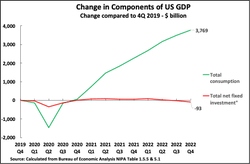
Strategic consequences for the U.S. economy
The short-term destabilization of the global economy caused by the U.S. stimulus packages, is extremely striking. But it is only an extreme illustration of the damage done by confusion over the role of consumption in the economy—this confusion also affects long term growth. Clarifying this theoretical conclusion leads to immediate factual, and therefore testable, conclusions which further clarify the reasons for the damaging strategic effects of the almost entirely consumer-based U.S. stimulus packages.
The prediction from economic theory is that because consumption is not an input into production, and investment is, then other things being equal the greater the share of consumption in the economy, and therefore the lower the share of investment, then over anything other than the short term the slower will be economic growth. Equally because, by definition, investment is an input into production, then, other things being equal, the higher the percentage of investment in the economy the more rapid will be economic development. As will be seen analysis of the U.S. economy fully factually confirms these theoretical predictions. This allows the long term strategic, as well as short term, failure of the U.S. stimulus packages to be clearly understood.
The slowing of the U.S. economy
Over the short term no single structural factor of U.S. GDP has a decisive influence on U.S. economic growth—as analyzed below this means, for example, that a consumer stimulus can have a short-term effect. However, if longer time periods are considered then the situation is entirely different. Taking a 10-year period, as would be predicted by economic theory, there is a positive correlation, to be precise 0.66, between the share of net fixed investment in the U.S. economy and GDP growth—a very high correlation. That is, the higher the percentage share of net fixed investment in U.S. GDP the faster the rate of U.S. GDP growth.
For present purposes it is unnecessary to determine why there is this close positive long-term correlation between net fixed investment and U.S. GDP growth—although the obvious explanation, in line with economic theory, would be the positive cumulative effect of high levels of fixed investment, an input into the economy’s supply side, in increasing U.S. capital stock. Nor is it even necessary, for present purposes, to determine the direction of causation between high levels of net fixed investment and high levels of GDP growth, or even to ascertain whether some third process determines both. It is simply sufficient to note that, due to this high correlation, the U.S. economy cannot achieve high levels of GDP growth without there also being high levels of net fixed investment in GDP. In other words, if over the longer term the U.S. economy is to grow more rapidly the percentage of net fixed investment in the U.S. economy must increase.
This, therefore, provides the fundamental criteria for evaluating the strategic effect of the U.S. stimulus packages to deal with the consequences of COVID on longer term U.S. economic growth. As already noted, these failed to raise U.S. net fixed investment—on the contrary U.S. net fixed investment fell as a share of U.S. GDP during these stimulus programs. Figure 12 shows the declining levels of U.S. net fixed investment during successive post-World War II business cycles, which explains the long-term slowdown in the U.S. economy. As the latest stage in this decline, U.S. net fixed investment was 4.8 percent of GDP in the 4th quarter of 2019, on the eve of the pandemic. This had fallen to 3.6 percent of GDP by the 4th quarter of 2022. Given that the closest correlation for U.S. GDP growth is with net fixed investment the U.S. stimulus packages will therefore fail to raise the rate of U.S. long term economic growth—in line with IMF projections of a continuing slowdown of the U.S. economy. That is, the stimulus packages were accompanied by a further fall in U.S. net fixed investment—which in turn will undermine U.S. long term growth due to the close correlation of U.S. GDP growth and U.S. net fixed investment. That is these consumer-based packages not only produced extremely damaging short term inflation but were a strategic failure for the U.S. economy.
Negative effects on U.S. growth
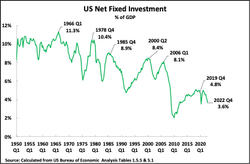
It is therefore clear that the U.S. stimulus packages, because they were concentrated on consumption, produced no fundamental increase in the share of net fixed investment in U.S. GDP. Given that net fixed investment has the strongest correlation with U.S. GDP growth these U.S. stimulus packages therefore produced no increase in long term U.S. GDP growth. That is, they were a strategic failure.
The distinction between the percentage of consumption in GDP and the growth rate in consumption
As already noted, the long-term growth rate of consumption in the U.S. economy is highly positively correlated with overall economic growth in the U.S. economy. But as already show, the higher the percentage of consumption in U.S. GDP the slower is the rate of U.S. economic growth. Other things being equal, therefore, a higher share percentage share of consumption in GDP, by slowing economic growth, will lead to a slower growth rate of consumption. This prediction from basic economic theory, is confirmed by the fact that the negative correlation of the share of total consumption in U.S. GDP and the rate of growth of consumption is an extremely high -0.79. That is, the higher the share of consumption in U.S. GDP the more slowly consumption, and therefore U.S. living standards, grows. The same processes will be seen to operate in China’s economy.
But it is the level and rate of growth of consumption, not the percentage share of consumption in GDP, which affects people’s real lives. This is indeed obvious. For example, a country such as the Central African Republic has an extremely high percentage of consumption in GDP, 99 percent, but is one of the poorest countries in the world, with a per capita GDP of $492 and its per capita consumption has fallen by 15 percent in the last 10 years. It would be absurd to tell the inhabitants of the Central African Republic that they had a high level of consumption because it is 99 percent of GDP! What matters to them is their extremely low level of consumption, due to the very low level of per capita GDP, and the extraordinarily low rate of growth of consumption.
The correlation of GDP growth and consumption growth.
In contrast, there is almost a perfect long-term correlation between U.S. GDP growth and growth of household consumption as shown in Figure 13. Taking a 20-year moving average, to remove short-term effects of business cycles, the correlation between U.S. GDP growth and U.S. household consumption is 0.97—an extraordinarily high figure, leaving no doubt as to the extremely high interrelation between U.S. GDP growth and the growth rate of U.S. consumption.
In summary, an increase in the share of consumption in U.S. GDP will lead to a slower rate of increase of consumption, and a higher rate of growth of GDP will be associated with a higher rate of consumption growth. This basic prediction of economic theory is fully factually confirmed for the U.S. and, as will be seen below, equally applies to China.
Part 3. The Implications for China
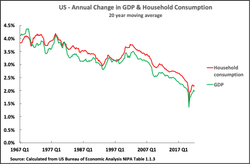
First, regarding the position in the business cycle, the situation of China’s economy at the beginning of 2023 is significantly different to that of the U.S. when it launched its stimulus packages. In the 4th quarter of 2019, immediately before the pandemic struck, China’s annual growth rate was 6.0 percent. However, in the previous three years China’s annual average growth rate was 6.4 percent, and in the preceding five years it had been 6.6 percent. In short, when the pandemic struck China’s economy was growing significantly below trend—whereas when the pandemic struck the U.S. was growing significantly above trend. Furthermore, during the three years since the beginning of the pandemic China’s economy significantly slowed further—its annual average growth rate in 2020-2022 was only 4.3 percent. In summary China’s growth during the last period, before it launches any stimulus measures in 2023, has been significantly below trend.
In addition, the fact that whereas the U.S. experienced very high inflation China’s producer price index has actually been falling since October 2022, combined with China’s low rate of consumer price inflation, is entirely in line with China’s lower than trend rate of growth—indicating both an absence of substantial inflationary pressures and the existence of spare capacity.
Therefore, China’s economy as it enters 2023 is in almost the exact opposite situation in terms of position in the business cycle to the U.S. when it launched its COVID stimulus packages.
- The U.S. economy was growing above trend when it entered the pandemic and then launched a stimulus package overwhelmingly focused on the demand side—on consumption. As already noted, the result was predictable. With a large increase in demand, and no increase in net fixed investment, that is no increase in the supply of capital, the U.S. suffered extremely high inflation and low growth.
- China entered the pandemic growing below trend and its fixed investment, that is the supply of fixed capital, grew more rapidly than retail sales during the pandemic itself. China experienced more rapid growth than the U.S. and entirely escaped the inflationary wave in the U.S. China’s consumer price inflation in December was 1.8 percent and its peak inflation in that year was 2.8 percent, whereas U.S. consumer price inflation in December was 6.5 percent and its peak inflation during 2022 was 9.1 percent.
These changes in the U.S. and China were therefore both in line with economic theory. They also determine the different situations regarding economic stimulus programs. It is clear that in the short-term China has the economic space to launch a program containing a significant consumer, that is demand side only, stimulus without the likelihood of this creating major inflation. Indeed, a stimulus for consumption is necessary for both economic and political reasons. Politically, the relatively low rate of increase in consumption during the pandemic period, compared to its previous growth rates, means that a rapid short-term increase in consumption will aid the population in recovery from the sacrifices of the three —which saved millions of lives but involved sacrifices in living standards. Economically, consumer industries have been growing more slowly than their historic rate creating negative pressure on them. A stimulus to consumption would therefore greatly aid output in the consumer industries.
A boost to consumption is also particularly appropriate for a stimulus program aimed to have relatively rapid results—as, in general, short-term increases in production in consumer facing industries can be more rapid than in capital goods industries as consumer facing industries, in general, are less capital intensive than investment ones. Therefore, output can be increased in a shorter period without the very high capital expenditures frequently required in investment industries.
The forms of consumer stimulus
Certainly, the present author does not have personal experiences of economic stimulus in an economy the size of China, but nevertheless his experiences in a very large city economy, London, are relevant. The author was in charge of London’s economic policy from 2000-2008 and London’s economy is larger than that of the majority of European countries—due to its extremely high level of productivity, with it being the only city in Europe that equals U.S. levels of per capita GDP. The author’s experience was entirely in line with the experience of Chinese regions that have launched steps to stimulate short term consumption via marketing, price reductions, coupons, and other steps. The most powerful specific experience of such consumer stimulus programs in London was in 2003 when the city suffered an extremely severe external economic shock due to the consequences of the U.S. invasion of Iraq. This invasion, as with COVID, was an extraneous blow, that is not due to normal economic processes in the business cycle.
London is one of the world’s largest internationally oriented city economies—in particular, one of the world’s most important financial centers and largest travel destinations for both business and tourism, and these form a large part of its economy. Fear of terrorism or military attacks during the Iraq war led to an extremely severe collapse of international, and to a lesser extent domestic, visitors. An indicator of the scale of this was that under this impact of the war the daily price of hotel rooms in London fell by 70-80 percent and those locations which, for branding reasons, refused to reduce their prices suffered 70-80 percent falls in visitors. Visits by domestic visitors also declined due to fear of terrorist attacks. This created serious downward pressure on London’s economy.
To meet this crisis no stimulus package was launched during the war itself, as no price or marketing incentive would lead to people travelling or going to visitor attractions if they believed they might be killed. But a stimulus package was prepared in advance for when the war ended. As soon as that occurred a consumer facing stimulus package was launched by London’s city government essentially similar to that launched by some Chinese regions and cities at the beginning of this year. This consisted of two elements. First, a major marketing campaign, financed by the city government, was launched promoting visitor attractions, restaurants, exhibitions etc. in the city. Second, in an interrelated move, subsidies were launched to allow temporary price reductions to visitor attractions, restaurants, exhibitions etc. In the case of London, the private sector companies involved in this were encouraged to offer temporary price reductions and the city government also gave a subsidy to such companies to make the price reductions still greater.
The results of this consumer facing program were extremely successful. Both international and domestic visitor numbers recovered extremely rapidly boosting economic recovery in the city. It is entirely possible some of this stimulus may have leaked into saving, but overall it is clear that the majority was used for consumption and the overall short term program was successful. Therefore, for both theoretical reasons and those of practical experience the present author is a strong supporter of launching consumer-oriented stimulus packages in the appropriate economic circumstances.
But as already analyzed any such consumer stimulus, that is one purely on the demand side, does not automatically increase supply. Therefore, except in conditions of deep economic depression, with enormous amounts of unused capacity, which does not exist in China at present, a purely consumer, that is demand side, stimulus will, outside of the short term, lead to putting back to use large amounts of spare capacity but only an increase in the supply side, which involves increased fixed investment, can sustain over the medium/long term an increase in production/GDP. Therefore, to judge the strategic effect of any stimulus program it is necessary to constantly measure not only the short-term effects on demand and consumption but also to see if it is producing an increase in investment.
Longer term growth
First, other things being equal, what is being achieved by such consumer-oriented programs is to change in time when expenditure occurs—for example, this is achieved by a price and/or advertising incentive given for consumers to spend now and not to delay in time expenditure. But while experience shows this can have a significant short-term impact nevertheless over the medium/long term, if nothing else changes, expenditure will remain limited by income. The consumer stimulus may change in time the point at which expenditure takes place, which in some circumstances is extremely economically useful, but by its direct effect it cannot by itself alter the overall expenditure that takes place over time. Long term expenditure is determined by income. If everything else stays the same higher expenditure than normal in the short term will be accompanied by lower expenditure than normal later. Only an increase in income can create, other things being equal, an overall long-term increase in consumption. And such long-term increases in income are determined by economic growth and production.
Second, in anything other than the short term, that is while unused capacity is being put back to work, only an increase in investment, that is in supply, can increase output. If this does not occur then, as with the U.S. stimulus packages, the increase in demand from increased consumption will primarily, or even exclusively, over the medium/longer term produce inflation, not an increase in output.
It is on this point that there is a clear medium/long term issue in China’s economy, and therefore for its strategy, which differs significantly from the short term. While China’s fixed investment has grown more rapidly than consumption during the pandemic this is exclusively due to the extremely sharp fall in consumption’s growth rate—it is not at all due to an increase in the growth rate of fixed asset investment. Figure 14 shows that the annual rate of increase of China’s fixed asset investment in December 2022, at 5.1 percent, was actually slightly slower than the 5.4 percent in December 2019 on the eve of the pandemic.
The fall in the proportion of net fixed investment in China’s GDP It is also crucial to note that over the longer term the percentage of fixed investment in China’s GDP, in particular net fixed investment, has fallen very considerably. Figure 15 show that between 2009 and 2020, the latest available internationally comparable data, the share of net fixed investment in China’s economy fell from 26.2 percent of GDP to 16.5 percent of GDP—a huge fall of almost 10 percent of GDP. |
| The percentage of net fixed investment in China’s GDP peaked in 2009 at 26.2 percent and fell by 2020, the latest available internationally comparable data, to 16.5 percent of GDP. Annual GDP growth peaked slightly earlier at 14.2 percent of GDP in 2007 and by 2020 had fallen to 2.2 percent—this last figure was certainly lowered by the COVID pandemic but the downward trend before this was clear. |
Confusion over the percentage of consumption in GDP and the rate of growth of consumption It is at this point that another theoretical confusion referred to previously comes in, again with exactly the same consequences as in the U.S. This is that loose talk of “increasing consumption” obscures the difference between the two different things of the percentage of consumption in GDP and the rate of growth of consumption. |
Because the percentage of consumption in GDP and the rate of growth of consumption move in opposite directions it is necessary to clearly strictly distinguish the two. This real relation is confused by unclear formulas of “raising consumption” as this obscures that an increase in the percentage of consumption in GDP will lead to a lower rate of growth of living standards. Therefore, to take the phrase in one recent article, talk of China having historically been “tightening its belt” because of its low percentage of consumption in GDP is highly misleading. It is the high level of investment in China’s economy which has led to a rapid rate of economic growth and therefore a rapid rate of growth of consumption and therefore of China’s living standards. “Loosening the belt,” if by that is meant a higher percentage of consumption in China’s GDP, other things being equal, will lead to a lower rate of growth of consumption and therefore a lower rate of growth in living standards—and therefore, over time, to lower living standards than are possible with a lower percentage of consumption, and higher level of investment, in GDP.
Relation of GDP growth a consumption The reason why increasing the percentage of consumption in GDP will lead in China to a slower rate of growth of consumption, and therefore of living standards, precisely as in the U.S., is because of the close correlation of GDP growth with the growth of consumption—as shown in Figure 18. The correlation is 0.76. |
In regard to this, certainly various predictions, theoretical or factual, may be made but, as always, in the end “the proof of the pudding is in the eating.” If there is not an increase in investment created by the demand created by the consumer stimulus program, which is precisely what occurred in the U.S., then all that a prolonged consumer stimulus will create, once unused capacity is put back to work, is inflation—again this is what factually occurred in the U.S. and was entirely in line with economic theory. To achieve the strategic goals for 2035, doubling GDP/per capita GDP compared to 2020, which requires a doubling of the economy’s productive capacity, then a very large increase in investment is required. An increase in consumption, because it is not an input into production, will itself create no increase in the economy’s productive capacity—despite the fact consumption is the ultimate goal of economic activity.
Incorrect statements, such as that consumption accounted for 67, or any other, per cent of GDP growth, as sometimes appear in sections of the Chinese media, obscure this reality and helped provide a rationale for damaging programs and results such as were seen in the U.S. in the last period. Investment will account for a large part of the increase in productive capacity which is required to achieve the 2035 strategic goals, consumption necessarily will be zero percent of the increase in productive capacity necessary to achieve the 2035 goals.
Finally. for clarity, these issues, naturally do not mean that even in the short term any initial demand side stimulus should consist wholly of consumption—demand for investment increases overall demand just as much as does consumption demand. But this difference of the demand and supply sides of the economy becomes particularly clear over the medium/long term. Therefore, increase in consumption demand, if unaccompanied by increased investment, can only produce relatively short-term increases in output. An increased in investment, in contrast, because it increases not only demand, but supply can lead to a medium/long increase in output and, therefore achievement of strategic goals.
The strategic goals in the economy, in particular, therefore require an examination of the conditions which will create a sustained increase in investment. That large issue, however, has to be the subject of another article simply for reasons of word length.
Conclusion
- As shown, confusion between the economy’s demand side and its supply side is extremely damaging. The facts regarding the results of the U.S. stimulus programs, and the issues involved for China, are entirely in line with both Marxist and serious Western economics. But they also show the dangerous errors of “vulgar” Western economics—errors which unfortunately sometimes appear in parts of China’s media.
- The negative aspects of the Western economies’ situation, the most severe stagflationary problems for forty years, was not caused by the Ukraine war—as this inflationary wave was already taking place long before that war started. It was directly caused by the major errors in the stimulus programs launched by the U.S. Frequently rationalized by the wrong idea that consumption can produce something, that is that it is an input into production, the U.S. launched a massive essentially exclusively consumer based, i.e., demand side only, stimulus. If such a stimulus had been launched when the U.S. had been growing below trend, and had spare capacity, then despite its theoretical confusions this stimulus package might have been effective—the impact of economic measures is determined by their practical content not by their theoretical economic rationale. But instead, this massive demand side only stimulus was launched when the U.S. economy was already growing above trend. The result was entirely predictable—with a huge increase in demand, and no increase in supply, the inevitable consequence was a huge inflationary wave, that is a short-term crisis. This inflation in turn led to sharply contractionary policies, notably steep interest rate rises, to attempt to bring it under control. These contractionary polices in turn slowed the economy—meaning that the stimulus packages were not only a short term but a complete strategic failure.
- China faces a sharply different practical situation. Its economy has been growing significantly below trend. A demand side stimulus will therefore find a situation where there is significant unused capacity. Under those circumstances a consumer stimulus, that is one solely on the demand side, is likely to be effective and necessary. Therefore, based both on considerations of economic theory and of personal practical experience, the present author strongly supports the idea of consumer stimulus as part of any overall stimulus program in China at present.
- A potential danger in China’s situation is of a different type. It is the confusion that appears in some sections of China’s media of repetition of the same confusions as in vulgar Western economic theory—the false idea that consumption is an input in production and therefore that consumption can produce something.
- The damaging practical consequences of this error are clear. A consumer-based stimulus launched in the current conditions of China’s economy, as already analyzed, should lead to a rapid and significant increase in production. But what will happen over the medium/long term will be determined by whether this demand side stimulus is accompanied by an increase in the economy’s supply side—which requires investment. The initial increase in output created by the consumer stimulus should not lead to damagingly high inflation in the short term for the reasons given, but after a certain period of time, exactly how long depends on how much spare capacity there is, unless there is an increase in investment, that is an increase in the supply side, there will either be slow growth, or inflation, or both—as in the U.S.
- The long-term implications for consumption of raising the percentage of consumption in GDP must be clearly understood. Other things being equal, over the medium/long term, the higher the percentage of consumption in GDP, because this lowers the percentage of investment, the lower will be the growth rate of the economy and of consumption. Over a longer period, such as the twelve years to 2035, increasing the percentage of consumption in GDP will lead to a lower level of consumption, and a lower standard of living, than with a higher percentage of investment, and therefore a lower percentage of consumption, in GDP. Those arguing for a higher percentage of consumption in GDP are in fact arguing in favor of a lower living standard by 2035 than would otherwise be the case. This is an inevitable consequence of the fact, demonstrated by economic theory, and confirmed factually by both the U.S. and China, that over anything other than the short term the percentage of consumption in GDP and the growth rate of consumption move in opposite directions—that is, the higher the percentage of consumption in GDP the lower will be the rate of growth of consumption.
- A consumption, that is purely demand side, stimulus is valuable in creating a rapid revival in 2023 by putting unused capacity back to work. But consumption, because it is not an input into production, can constitute nothing, that is precisely zero percent, of the doubling of productive capacity which is required to achieve the strategic goals to 2035. That doubling of productive capacity, however, requires a huge increase in investment. A necessary condition of the achievement of these strategic goals of 2035 is therefore creation of such investment—the conditions for achieving this, solely for reasons of space, requires another substantial article.
As the present global economic situation is largely defined by the by the extremely negative consequences of the U.S. stimulus programs, which was fully in line with economic theory, clarity on these issues is crucial both for achievement of China’s immediate economic targets in 2023 and the achievement of its strategic goals to 2035.
Author
John Ross is a senior fellow at Chongyang Institute for Financial Studies, Renmin University of China. He was formerly director of economic policy for the mayor of London.
Archives
February 2023
January 2023
December 2022
November 2022
October 2022
September 2022
August 2022
July 2022
June 2022
May 2022
April 2022
March 2022
February 2022
January 2022
December 2021
November 2021
October 2021
September 2021
August 2021
July 2021
June 2021
May 2021
April 2021
March 2021
February 2021
January 2021
December 2020
November 2020
October 2020
September 2020
August 2020
July 2020
First, for a little over three years I have been closely following China's approach in dealing with the COVID-19 pandemic. The results have been nothing less than stunning: the number of per capita infections and deaths are at the lowest level in the world, life expectancy has increased during this time, and the dialectic of economic development and public health has been managed very well.
The health of the population has not been significantly compromised - as has happened in some other countries - by the earlier and more toxic mutations of the virus, and the level of full vaccinations among the population above 3 years old is over 90 percent. In many respects, China has set a new "gold standard" for dealing with a pandemic. As one example, I have noted the huge amount of discussion with each revision of the measures for dealing with the pandemic, seeing how medical specialists and scientists were dealing daily with the many questions people had. The specialists were always "on message," seeking to explain the content, connotations, implications, and reasons behind each revision of the measures. Friends and colleagues in China gave me regular updates concerning the experiences with their own families, their workplaces, their concerns, and - most importantly - their hopes.
This leads to the second point: the "people-centered approach," or "taking the people as the center." While this has been a core position of the CPC, a people-centered approach has seen renewed emphasis in the new era since the CPC's 18th National Congress in 2012, when Xi Jinping was elected general secretary of CPC Central Committee. During the pandemic, this approach became absolutely central, expressed in "people come first, and life comes first," which has been the commitment of the CPC to the whole Chinese people since the first days of the pandemic. Without the health of the people, development and a moderately well-off society is not comprehensive, or is not complete is all respects.
Third, an international observer cannot avoid noticing how all of the policy measures are based on rigorous and comprehensive science. For example, on December 15, 2022, I listened to a two-hour lecture by Zhong Nanshan, the "hero of SARS" and recipient of the Medal of the Republic, China's highest state honor, for his services in fighting the COVID pandemic. The lecture has been watched by tens of millions of people across China, since it explains the immense amount of science that is behind China's huge success in dealing with the pandemic. Zhong Nanshan's lecture summarised much of the science, but this requires an immense amount of evidence, research, and collaboration between scientists, in China and across the world. For example, it is precisely because China has undertaken such comprehensive testing that we know now that 90 percent of Omicron infections are asymptomatic and that those who are symptomatic are mostly mild. Only rigorous science produces such results. Zhong Nanshan's message was very clear: Do not get infected but do not be afraid of the virus in its Omicron form.
Fourth is the comprehensive approach. As we well know, departmentalism is typical of the few Western societies, with their individualism and liberalism. The result has been that their "single solution" approach to the pandemic was an obvious failure. By contrast, one finds again and again that China takes a comprehensive approach: Health and economic development; all effective measures for ensuring a healthy population, and so on. For example, one's risk of infection or reinfection is very low with mixed vaccines (especially deactivated and adenovirus-based vaccines), Traditional Chinese Medicine, wearing quality face-masks, opening windows regularly, focusing on the elderly and children, and maintaining a high level of attention with disinfected surfaces. Clearly, this is a comprehensive approach, considering all aspects of what is effective. It is in this sense that we can see how China is the first country in the world where the coronavirus is moving from a pandemic to an endemic - and thus seasonal and non-threatening - status. Yes, China is stepping out of the pandemic, with 1.4 billion people. This is a momentous achievement and I am waiting eagerly to see how 2023 unfolds.
Fifth, I am struck by the way that China has identified where and how the health system can be improved. This feature always impresses me about China: no matter how good a practice may be, there is always room for improvement. This is also true with the all-important health system. It goes without saying that the improvements are comprehensive, leveraging the strengths of grassroots health services through to the highest research hospitals. As others have observed, with the lessons learned from the last three years, China's health system has seen impressive improvement.
By now it should be obvious why China is stepping out of the pandemic, and why the coronavirus has become endemic. I would like to conclude on a note of hope. As I have been engaging with friends and colleagues in China, I have seen a distinct hope and eagerness as 2023 begins. People are very much looking forward to returning to their home towns for the Spring Festival, which for many will be the first time in three years. All of this has also given me hope and put me in a very good mood, since I know that in 2023 I will finally be able to return to China.
Author
Roland Boer is a Marxist scholar from Australia, distinguished overseas professor at Renmin University of China, and on editorial board of the Australian Marxist Review. [email protected]
Archives
February 2023
January 2023
December 2022
November 2022
October 2022
September 2022
August 2022
July 2022
June 2022
May 2022
April 2022
March 2022
February 2022
January 2022
December 2021
November 2021
October 2021
September 2021
August 2021
July 2021
June 2021
May 2021
April 2021
March 2021
February 2021
January 2021
December 2020
November 2020
October 2020
September 2020
August 2020
July 2020
Nearly three years later, on the coming January 8, 20232, China will officially open its borders, remove the mandatory quarantine and nucleic acid tests for people entering the country, and downgrade the management of Covid-19 from Class A to Class B3. It is not an end of an era; rather, it is a continuation of a rigorous process of confronting a historic and global pandemic, while putting science and the people at its center. It has been an incredible experience to see how the Chinese government and people have taken on this pandemic, while the world has suffered4 6.68 million recorded deaths, with over 650 million people infected. The impact of this virus is one for the history books, the lasting effects to be studied for years to come, and the fight has not yet ended.
The Western mainstream media, however, has been quick to criticize China every step of the way, from the “draconian5” Zero-Covid strategy to the “dystopian6” measures to ensure a safe Winter Olympics games in Beijing, and now to the “nightmare7” of relaxing the country’s Covid-19 requirements. Rhetoric aside, what has the fight against the virus been like in China—characterized by the Zero-Covid strategy—and why are the relaxation measures happening now? It is important to look back at the last three years to understand how we arrived at this point today. Having lived in China throughout the ebbs and flows of the Covid-19 virus, I would categorize the country’s dynamic strategy into four key phases.
Phase 1: Emergency response (December 2019 to May 2020)
On December 26, 2019, Dr. Zhang Jixian9, director of the Department of Respiratory and Critical Care Medicine of Hubei Province hospital of Integrated Chinese and Western Medicine, saw an elderly couple that had a high fever and a cough—symptoms that characterize the flu. But further examination ruled out influenza A and B, mycoplasma, chlamydia, adenovirus, and SARS. She and her team then quickly determined there was a new virus at play. Three days later, the provincial authorities were alerted, then the Chinese Center for Disease Control (CDC) and by December 31 the WHO was informed10. On New Year’s Day, the CDC officials called11 Dr. Robert Redfield, head of the U.S. Center for Disease Control and Prevention, while he was on vacation, to inform him of the severity of their findings.
On January 3, the virus was identified with its genetic sequence which was then shared12 with the world a week later. At this point, there were many unknowns—what the virus was, how it was transmitted, and how it could be stopped. There were no vaccines, while the country—and the world—was unprepared. A strict lockdown of the city of 11 million people began on January 23, and 41,000 medical workers13 were dispatched from across the country to Wuhan. Saving lives and studying this new virus were the main priorities in this phase.
Phase 2: Control and elimination (June 2020 to July 2021)
Far from “failing17” as the Western media is claiming now, Zero-Covid worked extremely effectively. Since the pandemic broke, the average life expectancy of Chinese people actually increased from 77.318 to 78.219 years (2019-2021), surpassing the United States for the first time in history (Chart 1). In the U.S., however, the average life span dropped from 78.820 to 76.421 years during that same period, owing in large part to the high number of Covid-related deaths. This is particularly striking when you consider that China was the eleventh22 poorest country in the world in 1949 (measured by per capita PPP GDP) with a life expectancy of only 3623 versus 6824 for the U.S. This means that an average Chinese person’s lifespan more than doubled, whereas in the U.S., the average lifespan only grew by eight years in nearly eight decades.
Chart 1. Life expectancy in China and the U.S. during the COVID-19 pandemic
While it was containing the virus, China was also intensely studying the virus and developing responses, inaugurating26 its first vaccine, Sinopharm, in December 2020, which was subsequently approved27 by the WHO for emergency use on May 7, 2021. By October of that year, according to a Nature study28, Chinese vaccines accounted for nearly half of the 7.3 billion doses delivered globally. Since then, China has approved29 eight vaccines, with 35 others undergoing clinical trials, donated30 328 million doses, pledged31 over US$100 million to the Covax global vaccine distribution program for Global South countries, and proposed32 that vaccines become a global public good.
Phase 3: Adaptation and preparation (August 2021—October 2022)
There is no one-size-fits-all measure for a country of 1.4 billion people. During this third phase, guided by science, the country experimented with its prevention and implementation practices. Mass testing was developed to high levels of efficiency, in which Guangzhou34’s 18 million inhabitants could be tested a mere three days, while the cost of pooling PCR tests (ten samples per test tube and taking advantage of low infection rates) were reduced to merely 3.5 yuan35 (US$0.50) per person. The country developed a nation-wide digital travel code and city-level “green code” cellphone applications36 to track Covid cases and those who have visited high-risk areas. All the while, the government moved towards more targeted measures to limit the use of large-scale lockdowns. During the Shanghai outbreak, for example, residential communities were classified37 into “lockdown,” “controlled,” or “precautionary” zones based on their risk level to try to minimize the interruption of daily and economic life.
Between January 2020 and mid-April 2022, China had spent38 an estimated US$45.1 billion to provide 11.5 billion free PCR testing for its residents. The costs of this mass testing strategy, however, were also mounting, with estimates reaching 1.8 percent39 of the country’s GDP and putting pressure especially on local government budgets. Despite the economic pressures, rather than “crippling40” China’s economy, the country’s GDP grew nearly four times faster than the U.S. and five times compared to the EU, from the start of the pandemic to Q3 of 2022.41
Despite being the second largest economy, China is still a developing country. The pandemic strained the country’s medical system, which was lacking in several key areas. Accordingly, China used the last three years to begin to fill in those gaps, primarily through increasing its intensive care unit (ICU) capacity. In 2019, China had only 3.6 ICU per 100,000 residents42, which was nine times less than the U.S. with 34.7 units. Since 2019, China increased43 its supply of ICU beds 2.4-fold (57,160 in December 2019 to 138,800 in December 2022). In the same period, ICU doctors and nurses44 increased by one-third and doubled, respectively.
On January 15, 2022, China had its first case of locally transmitted Omicron infection. On April 18, 2022, Shanghai announced45 its first three Covid-related deaths, all unvaccinated elderly people aged over 89 years. At the time of the Shanghai outbreak, while 87 percent46 of the country were already fully vaccinated, that number dropped to only 62 percent47 for the city’s 3.6 million elderly aged over 60, with 38 percent having received booster shots. The country knew that this vulnerable sector of the population had to be protected.
Significant efforts have since been made to increase vaccination of the elderly. The official National Health Commission reported48 that on November 30, 2022, the breakdown of vaccination rates for people aged over 80 years are as follows: 76.6 percent at least one shot, 65.8 percent two shots or more, and 40 percent three or more doses. Despite the lower mortality rates of the Omicron variant, its highly contagious nature posed serious challenges to the country’s existing prevention and control measures, while putting great strains on the economy. Even two doses49 of so-called advanced Western mRNA vaccines like Pfizer/BioNTech’s vaccine or Moderna’s similar mRNA vaccine provide only about 30 percent protection against symptomatic infection from Omicron for about four months.
Phase 4: Downgrading severity and easing controls (November 2022 to present)
On November 11, the central government released its “20 measures”52 to begin to relax its Zero-Covid policies. This included reducing mandatory quarantine time for inbound flights, decreasing isolation times, promoting vaccination of elderly, and eliminating the use of mass testing. For a country of its size, any central government policy takes time and huge organizational capacity to be implemented at the local scale.
The easing created initial confusion, and some people were upset with local community officials for not upholding the central government’s easing measures, frequently aired on Chinese social media platforms. Though there was frustration and exhaustion, it would be a mistake to believe that the downgrading phase was a response to the series of small, coordinated “white paper protests” that occurred after an Urumqi apartment fire that claimed the ten lives on November 24. Not only did the protests occur two weeks after the government began relaxing its Covid measures, but they were also not representative of the Chinese public opinion at large. The government easing also sparked another concern, with many people worried about getting infected. Several Weibo social media users53 expressed anger and criticism of the protesters, seeing them as irresponsible, middle-class youth who wanted their personal liberties at a collective expense. Unlike the blanketing Western media portrayals, Chinese people do not have a singular voice.
On Monday December 26, China announced54 it will downgrade the management of Covid-19 from Class A to Class B of infectious diseases on January 8, 2023. The three main reasons for this change include the fact that Omicron is not as virulent as Delta, a large percentage of the population had been vaccinated, and the country’s health system was better prepared. China uses a three-level system for the classification of infectious diseases, each delimiting specific response measures. Class A, the most dangerous, includes only cholera and the plague. Class B includes SARS, AIDS, and tuberculosis. Class C includes the flu and the mumps. Corresponding to this change, Covid-19 measures will be further relaxed.
Twelve55 main countermeasures were identified for the new Covid-19 policy corresponding to Class B control: 1) Increase vaccination rates; 2) prepare drugs and testing reagents for patients; 3) increase investment in construction of medical resources including ICU beds; 4) shift from mass PCR testing; 5) treat patients according to severity; 6) improve health survey and data, including vaccination status of those aged over 65 years; 7) control vulnerable population institutions, including elder care, hospitals, and schools; 8) strengthen prevention and control for rural areas and for high-risk patients; 9) increase epidemic monitoring, response, and control; 10) promote personal protection and the principle of everyone’s responsibility for their own health; 11) enable information access and education; and 12) optimize international personnel exchanges.
In a press conference56 of the State Council Joint Prevention and Control Mechanism, Dr. Yin Wenwu, Chief Physician of CDC’s Division of Infection Prevention, addressed the consequence of classifying Covid-19 as a Class B, which would reduce the frequency of the publication of data. The new data, which will be released monthly, will include the number of existing hospitalized cases and serious illnesses, including critical illnesses, and the cumulative number of deaths.
As expected, downgrading the severity of the virus’s management would also mean increasing the number of infections and related deaths. However, no single prediction model can be easily applied to China. Existing models for Covid-19 infection and mortality predictions have a wide range of outcomes. Forecast accuracy tends to decrease as prediction times increase, with models showing up to fivefold increase57 in error comparing one-week to 20-week horizons. Even the same Omicron variant has resulted in varied mortality rates in different countries. As of December 21, the U.S. seven-day rolling death rate58 was as high as 437 people, or a rate of 1.29 per million. Meanwhile, Japan had a comparable rate of 2.0 per million and New Zealand 0.85 per million.
Although China has now surpassed the life expectancy of the U.S., it has relatively fewer people 75 years and older than the U.S. (46 percent59 fewer as a percentage of the total population for each country). Omicron has had the impact that a massive 69 percent60 of all Covid-19 deaths in the U.S. in September 2022 were from this age group. The demographic difference in this age group, taken as a stand-alone factor, would imply an over 30 percent reduction in likely death rates for China.
Western media have been quick to use selective stories and photographs to create a broader image of the “chaotic61” situation in China, including alleging very high death rates. China, with a population of over 1.4 billion people, had over 27,00062 deaths per day prior to the pandemic. Using existing Omicron death rates from other countries would infer a possible 6 percent increase in death rates. These would be significant deaths, into the many tens of thousands, but there is no evidence yet provided that supports the millions that the West is speculating.
This downgrading phase is indeed complex and challenging, as doctors are working overtime with increase in cases, some hospitals are in full capacity, fever medicines have faced shortages, and winter-related ailments are adding complications. However, relaxing measures now means that China has used the last three years to try to prepare itself the best that it can by vaccinating the people, studying the virus, building medical infrastructure, training workers, and waiting until a much less deadly strain had emerged. It has also gained hard-earned experience that is essential to managing any future pandemic.
Steps being taken now
On November 29, the State Council’s Joint Prevention and Control Mechanism, adjusted the booster vaccination protocol, and required localities66 to extensively survey senior populations and ramp up services and awareness campaigns. Between December 1 and 13, 823,00067 of those over 80 years old received a third vaccine. China has created the world’s first commercially released inhaled vaccine68 for Covid-19: CanSino Biologics’ Convidecia Air, a non-replicated viral vector vaccine. This booster is already gaining popularity69 with the elderly.
Regarding the supply of medicines, some cities had shortages of fever medicines in the first weeks of December as cases increased. Hoarding, price-gouging, and the spike in demand were among the factors that contributed the supply shortage. In response, local governments started to distribute70 Ibuprofen for free, and Beijing residents, for example, can now get Ibuprofen and Paracetamol within an hour. China also passed a regulation71 on online pharmaceutical suppliers, that included penalties up to five million RMB (US$720,000) for pharmacies that increase prices according to speculative behavior. China has72 also made Pfizer’s Paxlovid oral antiviral treatment available.
Due to mass testing during phase three of the anti-pandemic fight, the government was able to obtain accurate data about the virus to inform its responses. As mass testing has been phased out in this current phase, some data precision will inevitably be foregone. However, China’s resilience is demonstrated in its ability to respond to new situations, applying technologies and science to evolve its public health system. For example, in the past two weeks, over ten provincial CDC’s, including in Sichuan, Jiangsu, Zhejiang, have launched surveys73 with hundreds of thousands of participating citizens. This survey data, though limited by sampling methodology, provides an important reference for local and central authorities to monitor the path of the disease, and collect information including on important hospitals, availability of fever drugs, and response capacity of local governments.
On December 31, Hainan released74 the results of their second online survey (conducted December 19-25) filled in by about 3.4 percent of the province’s population. Below is one of the charts released (Chart 2).
Chart 2. Proportion of infected persons health care seeking behavior in the two rounds of survey population
Several prediction models have been published in the last week, including one by former CDC chief scientist of epidemiology Zeng Guang,78 states that the infection rate in Beijing may have exceeded 80 percent. These models also predict that the second wave is likely to be much milder and point to three factors behind the higher hospitalizations in the city: Beijing’s winter exacerbates respiratory symptoms among the elderly, Beijing is now listed as a moderately aging society (with 20 percent79 of the residents are above 60 years old, and the dominant80 BF.7 subvariant appears more virulent.
The government is paying close attention81 to the availability of medical resources, especially in the rural areas, in anticipation of the week-long spring festival starting January 21. China has increased daily production82 of antigen tests to 110 million units, along with 250,000 oximeters per day, and is prioritizing supply to rural areas. Rapid antigen tests cost as low as US$0.51 each on the e-commerce platform, Pinduoduo. In the rural areas where the medical infrastructure is less developed, the severity of the virus is not as bad as originally feared, according to online accounts83. Barefoot doctors84, a legacy of the Mao-era and sometimes pilloried by those seeking to privatize rural health, have been essential in providing care in rural eras despite having less resources than major city hospitals.
A look back at the last three years shows how difficult the pandemic has been for China and the world, testing the Chinese government’s capacity to confront such an unforeseen public health crisis as well as the people’s patience. In Beijing where I live, however, people are back and bundled in the streets, at work, and on the subways, with traffic and travel recovering. People are anxiously awaiting the spring festival, the most important holiday of the year. As we enter into a new year and a new era of fighting Covid-19—while anticipating the new viruses that will inevitably emerge—the hope is that the world can learn from these hard-earned lessons, act and cooperate using science, not rumors, and embody a spirit of international solidarity, not stigma.85
Notes
- ↩ Ministry of Foreign Affairs, PRC, MFA News
- ↩ Ministry of Foreign Affairs, PRC, MFA News
- ↩ Global Times, China to downgrade management of COVID-19 from Class A to Class B from January 8
- ↩ World Health Organization, WHO Coronavirus (COVID-19) Dashboard
- ↩ Bloomberg, China Hits Zero Covid Cases With a Month of Draconian Curbs
- ↩ Daily Mail and Reuters, Winter Olympics Dystopian Scenes Inside Beijing’s Closed-Loop Covid Quarantine
- ↩ The Washington Post, China’s new covid nightmare could become a global catastrophe
- ↩ CGTN, COVID-19 testing to be increased in China’s Wuhan after new case confirmed
- ↩ Tricontinental: Institute for Social Research, China and CoronaShock
- ↩ World Health Organization, Novel Coronavirus (2019-nCoV) SITUATION REPORT-1 JANUARY 21 2020
- ↩ The New York Times, The Lost Month: How a Failure to Test Blinded the U.S. to Covid-19
- ↩ World Health Organization, Novel Coronavirus (2019-nCoV) SITUATION REPORT-1 JANUARY 21 2020
- ↩ China Daily, Entire nation mobilizes to help Wuhan
- ↩ Worldometer, COVID-19 Data in China
- ↩ China CDC Weekly, Eleven COVID-19 Outbreaks with Local Transmissions Caused by the Imported SARS-CoV-2 Delta VOC—China
- ↩ Worldometer, Coronavirus Death Toll
- ↩ Consumer News and Business Channel, Here’s what lies ahead for China after zero-Covid failed
- ↩ National Health Commission, PRC, Statistical Bulletin of China’s Health Development in 2019
- ↩ National Health Commission, PRC, Statistical Bulletin of China’s Health Development in 2021
- ↩ National Center for Health Statistics of CDC, U.S. Life Expectancy Increased in 2019, Prior to the Pandemic
- ↩ National Center for Health Statistics of CDC, Mortality in the United States, 2021
- ↩ Asia Times, A history of China’s fight against poverty
- ↩ National Library of Medicine, Nutrition and health in China, 1949 to 1989
- ↩ National Center for Health Statistics of CDC, Mortality Trends in the United States, 1900–2018
- ↩ Worldometer, Reported Cases and Deaths by Country or Territory
- ↩ Contagion Live, China’s Sinopharm COVID-19 Vaccine Approved by WHO
- ↩ World Health Organization, WHO lists additional COVID-19 vaccine for emergency use and issues interim policy recommendations
- ↩ Nature, China’s COVID vaccines have been crucial—now immunity is waning
- ↩ COVID19 Vaccine Tracker, 8 Vaccines Approved for Use in China
- ↩ Bridge of Global Health Strategy, China COVID-19 Vaccine Tracker
- ↩ South China Morning Post, Xi Jinping says China promises 2 billion Covid-19 vaccine doses to other countries in 2021
- ↩ China Daily, China’s vaccines are global public good
- ↩ China CDC Weekly, Perspectives: The Dynamic COVID-Zero Strategy in China
- ↩ South China Morning Post, Coronavirus: 18 million tests in three days as Guangzhou tries to stem spread in latest outbreak
- ↩ Caixin Global, China Further Slashes Price of a Covid-19 Test to $2.40
- ↩ The Paper, When will the health codes be interconnected?
- ↩ Global Times, Shanghai reports three COVID-19 related deaths due to underlying diseases for the first time amid the latest flare-up
- ↩ Caixin Global, In Depth: As Mass Covid Testing Becomes China’s New Normal, Debate Grows Over Who Pays
- ↩ Caixin Global, Will Regular Covid Testing Help or Hurt China’s Economy?
- ↩ Financial Times, How China’s lockdown policies are crippling the country’s economy
- ↩ This data was provided by British economist John Ross and is included in his upcoming article on Covid-19 and the Chinese economy.
- ↩ Global Times, China further focuses on severe COVID cases treatment with tiered medical services plan
- ↩ Yujian Finance and Economics, ICU beds increased 2.4 times in three years: our critical care supporting facilities have been racing against time
- ↩ Yujian Finance and Economics, ICU beds increased 2.4 times in three years: our critical care supporting facilities have been racing against time
- ↩ Global Times, Shanghai reports three COVID-19 related deaths due to underlying diseases for the first time amid the latest flare-up
- ↩ YCharts, China Coronavirus Full Vaccination Rate
- ↩ Global Times, Shanghai reports three deaths, all elderly, unvaccinated
- ↩ Joint Prevention and Control Mechanism of the State Council, Work Plan for Strengthening COVID-19 Vaccination for the Elderly
- ↩ The Scientist, Omicron Appears to Evade Vaccines Better Than Other Variants
- ↩ JAMA Network, Estimates of SARS-CoV-2 Omicron BA.2 Subvariant Severity in New England
- ↩ Global Times, Exclusive: Chinese scientists prove Omicron’s pathogenicity has geometrically decreased compared with previous strains
- ↩ Global Times, China optimizes anti-epidemic measures, shortens quarantine period for intl arrivals
- ↩ The Wall Street Journal, China’s Censors End Crackdown on Covid-Policy Criticism—of a Certain Kind
- ↩ China Daily, China to manage COVID-19 with measures against Class B infectious diseases
- ↩ National Health Commission, PRC, Explanation on Overall Plan for Implementing Class B Infectious Disease Management for COVID-19 Infections
- ↩ National Health Commission, PRC, Transcript of the Press Conference of the Joint Prevention and Control Mechanism on December 27, 2022
- ↩ PNAS, Evaluation of individual and ensemble probabilistic forecasts of COVID-19 mortality in the United States
- ↩ Our World in Data, Coronavirus (COVID-19) Deaths
- ↩ Statistics Times, United States vs China by population
- ↩ Kaiser Family Foundation, Deaths Among Older Adults Due to COVID-19 Jumped During the Summer of 2022 Before Falling Somewhat in September
- ↩ The Economist, Ending China’s zero-covid policy could unleash chaos
- ↩ National Bureau of Statistics, PRC, Statistical Bulletin of China’s National Economic and Social Development in 2019
- ↩ Caixin Global, Weekend Long Read: Why China’s Seniors Hesitate to Get Vaccinated
- ↩ U.S. Food & Drug Administration, COVID-19 Bivalent Vaccine Boosters
- ↩ Centers for Disease Control and Prevention, COVID-19 Vaccinations in the United States
- ↩ China Daily, Vaccination action plan to target elderly
- ↩ Joint Prevention and Control Mechanism of the State Council, Work Plan for Strengthening COVID-19 Vaccination for the Elderly
- ↩ Business Wire, World-First Inhaled COVID-19 Vaccine, Developed in Partnership Between Aerogen® and CanSinoBIO, First Public Booster Immunization in China.
- ↩ CGTN, Inhalable COVID-19 vaccines gain popularity among seniors in China
- ↩ Communist Youth League Central Committee, Free medicines deliver in many places! Mobile diagnosis and treatment vehicles drive to the door and the PCR test booths turn into a diagnosis and treatment station.
- ↩ South China Morning Post, China targets online pharmacies for price gouging on Covid-19 medication
- ↩ Global Times, Beijing to distribute COVID-19 drug Paxlovid to community health centers to help key population amid approaching peak caseload
- ↩ The Paper, Why did Sichuan, Jiangsu, Zhejiang and other provinces launch the COVID-19 infection survey?
- ↩ Sanya Released, Online survey of COVID-19 infection in hainan province
- ↩ Global Times, Virologists and CDC departments deny reemergence of COVID-19 original strain and Delta variant in China
- ↩ Guangming, What strains are dominant in Guangzhou now?
- ↩ JAMA Network, How the U.S. Failed to Prioritize SARS-CoV-2 Variant Surveillance
- ↩ IFeng, Zeng Guang:Beijing covid infection rate may exceed 80%. The first storm is relatively large, then the second wave is very low.
- ↩ Global Times, Beijing now a moderately aging society, to become severely aging by 2035
- ↩ Guangming, Beijing’s main strain is BF.7, the most contagious one so far.
- ↩ Joint Prevention and Control Mechanism of the State Council, Notice of the current work program for the prevention and control of covid infection in rural areas
- ↩ Guancha, All-out efforts to ensure the supply of medical supplies and drugs
- ↩ Yuyan Guancha, My hometown has survived the “pandemic”.
- ↩ Gongdushijian, The barefoot doctors won a headwind game, while the online experts were confused
- ↩ World Health Organization, WHO Director-General’s remarks at the media briefing on COVID-2019 outbreak on 14 February 2020
Author
Tings Chak is a researcher and the art director of Tricontinental: Institute for Social Research and co-founding member of the Dongsheng collective. She is currently pursuing a doctorate at Tsinghua University and lives in Beijing.
Archives
January 2023
December 2022
November 2022
October 2022
September 2022
August 2022
July 2022
June 2022
May 2022
April 2022
March 2022
February 2022
January 2022
December 2021
November 2021
October 2021
September 2021
August 2021
July 2021
June 2021
May 2021
April 2021
March 2021
February 2021
January 2021
December 2020
November 2020
October 2020
September 2020
August 2020
July 2020
12/1/2022
Western Media Has Not Much Evolved From the Era of the Yellow Peril in Its Routine China-Bashing By: Felix Abt
Read NowDistorted coverage of alleged removal of Hu Jintao from Communist Party Congress is par for the course along with other recent coverage.
“The removal of Hu from the hall occurred mere minutes after foreign media were allowed into the Great Hall,” Pike adds. This immediately raises the question of why Xi Jinping should wait to “remove” Hu Jintao until Western media are on the scene, having only waited for such an opportunity to pillory the “cruel and inhumane dictator Ji Jinping”?
Unwelcome details blanked out
Here, for example, you can see Xi Jinping taking care of him as a friendly usher.
Cutting away an important part of the message and changing perceptions with misleading text is manipulation and is—rightly!—castigated by the same media when it is done by China.
Immediately prior to the incident at the Party Congress, Hu Jintao participated in the election as the second eligible voter, just after Xi Jinping, who cast his vote at the ballot box. In a society that is much more Confucianist than Communist, this symbolic placement in the vote signifies great respect for the elder statesman. The Western media also blanked this out of the overall picture. This made it easier for them to construct a coup, a purge and a humiliation of the former president.
According to George Soros, Xi is the “most dangerous man in the world.”
Political purge and humiliation for the history books or disruption of “worship”?
A report by Singaporean TV station CNA added an important detail that Western media representatives who were in the room seemed to have deliberately ignored: Hu had been looking at some documents on the table in front of him and apparently had a disagreement with the current chairman of China’s legislature, Li Zhanshu, who was sitting to his left, who took the documents out of his hand.
And when Li Zhanshu tried to get up to help Hu stand, Li was briefly dragged back to his seat by Wang Huning, a party ideologue and former professor of international politics to his left, making matters even more confusing. Xi stopped this disruption to the choreographed party meeting and summoned a staffer, who then tried to get Hu to leave, and who then escorted him out of the room. The video also shows that Hu, after standing up, first hovered in place, then took a few slow steps, then stopped and turned to Xi, who nodded briefly but continued to look at the assembled delegates.
Claimed purge makes no sense
Bill Bishop of the China newsletter Sinocism stated that the “purge claimed by the media doesn’t make sense that way.” Hu Haifeng, Hu Jintao’s son and party secretary of Lishui, Zhejiang, also sat in the room. “A purge of one without the other would be unlikely,” Bishop explained.
“Xi is certainly not shy about taking drastic action, but his obsession is to restore party discipline through rules and procedures. He has never gone the way of Stalin or North Korea of just making his enemies disappear. Even with his bitterest foes—such as Bo Xilai, Zhou Yongkang, and Guo Boxiong, people who, in fact, plotted a coup against him—Xi took them down, but did everything according to the procedures.
He is a stern but not an arbitrary ruler. His books and speeches have more citations from China’s Legalism school than anything else. Legalism (a bad translation) stresses the importance of rules and regulations over arbitrary power.
If anyone wants to challenge Xi, it would be incredible for them to do so on the last day of the party congress, which is mainly for formal endorsement and communication. The debate and negotiations happened behind the scene MONTHS beforehand. There were plenty of opportunities for the two to argue if they didn’t agree with each other. This was simply not the case.”
Why have some Western media platforms gone wild with speculation, including suggesting it was a purge, the interviewer asked:
“This is the problem I have with the Western media and those ‘experts.’ You can be critical of the Chinese system, and you may dislike it intensely, but you at least need to understand what you are criticizing. Their imagination of China is just a plus-size North Korea, a modern-day Stalinist state, or the new Nazis. In fact, many Western media just borrow the same analytical tools they used to analyze the Soviet Union or North Korea or even Nazi Germany and apply it to China.
This is what I call the intellectual Procrustean bed they have forced on everyone studying China. Sometimes it can get really ridiculous. It’s either laziness or dogmatic rigidity or having an agenda—or a combination of all these.
There are many problems in Xi’s system, and so far he and the party have not come up with convincing answers to them. But to imagine it simply as another Soviet Union or North Korea is missing the point. If people start to make decisions based on such skewed views and perceptions, that will lead to real-life consequences. Hong Kong is a living example of it.”
So it is okay to criticize the Chinese system harshly, and pundits and the media may deeply loathe it, but they do so while being quite clueless.
Also, contrary to the predictions and speculations of experts and media in the West in the run-up to the Party Congress, the “Xi Jinping Thought on Socialism with Chinese Characteristics for a New Era” was not shortened to Xi Jinping Thought in the Constitution, nor was Xi given new descriptive titles such as “Leader/领袖.”
Further background and insights censored by the Western media
- China has remained essentially Confucian for more than two thousand years. Confucius advocated a government that cares for the people and makes their welfare its primary concern. It should be a meritocracy, in that “those who govern should do so on the basis of merit and not on the basis of inherited status,” he proclaimed, and that it should be enlightened and benevolent (in which the demonstrably most capable people who best serve the people should rise to positions of leadership).
This is in contrast to Western democracies, where even the most incompetent can come to power thanks to empty promises and/or because they were well sponsored, and then have their own interests and those of their patrons in mind rather than the interests of their constituents. In China, civil servants still have to pass exams and prove themselves if they want to keep their jobs. This corresponds to the centuries-old Confucian tradition, according to which anyone, regardless of their social background, could obtain a position in the civil service at the imperial court after passing an entrance examination in various subjects. The fact that 800 million people have been lifted out of poverty in China over the past 40 years, accounting for more than 75% of global poverty, is no accident, but part of the application of this philosophy. - Mainstream media such as Foreign Affairs magazine highlighted the “Collateral Damage in China’s War on Covid,” or Nikkei, the world’s largest financial newspaper, headlined “Self-isolated: China’s lonely zero-COVID battle in spotlight” without ever telling their readers and viewers why the Chinese government took draconian measures against the Covid pandemic: China’s biggest weakness is its health care system. South Korea has 10 intensive care beds per 100,000 people, America has 34, and China has only 4. As a result, the government feared that the health care system would not be able to handle a large influx of seriously ill patients. Most retirees are not vaccinated.
The reason that modern medicine, including hospitals with intensive care units, lags behind the rest of the world in China is that the Chinese believe in their traditional medicine (acupuncture, herbal medicine, diet, exercise, and manual therapy to correct imbalances in the body and promote mental and physical health) because it has been used for thousands of years and is steeped in tradition, belief, popularity and anecdote. Western remedies are far less popular because the vast majority of Chinese also believe that traditional Chinese medicine has fewer side effects and has a stronger restorative effect on the body.
For example, the conservative Korea Herald in Seoul soberly headlined that Hu Jintao was helped off the stage at the Party Congress.
“Media war between China and the West"
Do you know Dilana Dilixiati? No, of course you don’t. But you certainly know Peng Shuai, the famous Chinese tennis player who, according to Western media reports, accused a retired top politician of rape (the word rape does not appear in her original Chinese text), after the years-long secret love affair with many ups and downs between the two had gone to pieces.
Western politicians and media therefore immediately called for a boycott of the Winter Olympics in Beijing.
Dr. Pan Wang, a China expert from the University of New South Wales, provided background information and insights into the case on Australian television that were not available elsewhere.
She said it was only natural that Western organizations such as the World Tennis Association interpreted Ms. Peng’s social media post as a complaint of sexual misconduct and were suspicious of Beijing’s response given the lack of detailed information, communication or transparency and censorship on the matter.
However, she dismissed the accusation, saying there is no clear allegation of rape, which is a criminal offense in China, and “sexual harassment” falls under the Civil Code.
Whether the persuasion or coercion of the former vice premier described by Peng Shuai could be called “sexual assault” in the usual sense is subjective, she said.
She added that, while Beijing wants to suppress any controversy about its officials, the Western media are also pursuing their own political agenda regarding China.
“This case is about harassment, power and skepticism, and it occurred in a broader context of growing tensions between China and, for example, Australia, stemming from diplomatic tensions, trade disputes and growing accusations against China’s human rights, democracy and censorship,” she added.
She concluded: “So there’s a media war between China and the West and the Australian media here, too, and that’s reflected in the opposing views of the social media posts.”
The hidden story of the amazing career of a Uyghur woman
The 1.94-meter (6’ 4-1/2”) center basketball player of the Guangdong Vermilion Birds, who helped the Chinese women’s national team win a silver medal at the World Cup, regularly visits her family in Xinjiang.
The Australian think tank ASPI, funded in particular by the Australian Department of Defense, the U.S. government, and the Western war industry, published the widely cited but refuted pamphlet “Uyghurs for Sale.” The organization was one of the driving forces in spreading the propaganda campaign of “genocide” against the Uyghurs in China, which originated in the United States.
The case is clear: Dilana Dilixiati, a Uyghur, and her ability to pursue a career as a top athlete and to travel, contradicts the Western narrative that is ingrained in people’s minds that Uyghurs, who are totally discriminated against, are prisoners and victims of genocide and cannot leave Xinjiang. Their story had to be kept quiet by the media, because consumers would naturally have noticed that there was something wrong with the prevailing narrative, and who likes to be manipulated.
Author
Felix Abt is the author of “A Capitalist in North Korea: My Seven Years in the Hermit Kingdom” and of “A Land of Prison Camps, Starving Slaves and Nuclear Bombs?” He can be reached via his Twitter account.
Archives
November 2022
October 2022
September 2022
August 2022
July 2022
June 2022
May 2022
April 2022
March 2022
February 2022
January 2022
December 2021
November 2021
October 2021
September 2021
August 2021
July 2021
June 2021
May 2021
April 2021
March 2021
February 2021
January 2021
December 2020
November 2020
October 2020
September 2020
August 2020
July 2020
Archives
July 2024
June 2024
May 2024
April 2024
March 2024
February 2024
January 2024
December 2023
November 2023
October 2023
September 2023
August 2023
July 2023
June 2023
May 2023
April 2023
March 2023
February 2023
January 2023
December 2022
November 2022
October 2022
September 2022
August 2022
July 2022
June 2022
May 2022
April 2022
March 2022
February 2022
January 2022
December 2021
November 2021
October 2021
September 2021
August 2021
July 2021
June 2021
May 2021
April 2021
March 2021
February 2021
January 2021
December 2020
November 2020
October 2020
September 2020
August 2020
July 2020
Categories
All
Aesthetics
Afghanistan
Althusser
American Civil War
American Socialism
American Socialism Travels
Anti Imperialism
Anti-Imperialism
Art
August Willich
Berlin Wall
Bolivia
Book Review
Brazil
Capitalism
Censorship
Chile
China
Chinese Philosophy Dialogue
Christianity
CIA
Class
Climate Change
COINTELPRO
Communism
Confucius
Cuba
Debunking Russiagate
Democracy
Democrats
DPRK
Eco Socialism
Ecuador
Egypt
Elections
Engels
Eurocommunism
Feminism
Frederick Douglass
Germany
Ghandi
Global Capitalism
Gramsci
History
Hunger
Immigration
Imperialism
Incarceration
Interview
Joe Biden
Labor
Labour
Lenin
Liberalism
Lincoln
Linke
Literature
Lula Da Silva
Malcolm X
Mao
Marx
Marxism
May Day
Media
Medicare For All
Mencius
Militarism
MKULTRA
Mozi
National Affairs
Nelson Mandela
Neoliberalism
New Left
News
Nina Turner
Novel
Palestine
Pandemic
Paris Commune
Pentagon
Peru Libre
Phillip-bonosky
Philosophy
Political-economy
Politics
Pol Pot
Proletarian
Putin
Race
Religion
Russia
Settlercolonialism
Slavery
Slavoj-zizek
Slavoj-zizek
Social-democracy
Socialism
South-africa
Soviet-union
Summer-2020-protests
Syria
Theory
The-weather-makers
Trump
Venezuela
War-on-drugs
Whatistobedone...now...likenow-now
Wilfrid-sellers
Worker-cooperatives
Xunzi

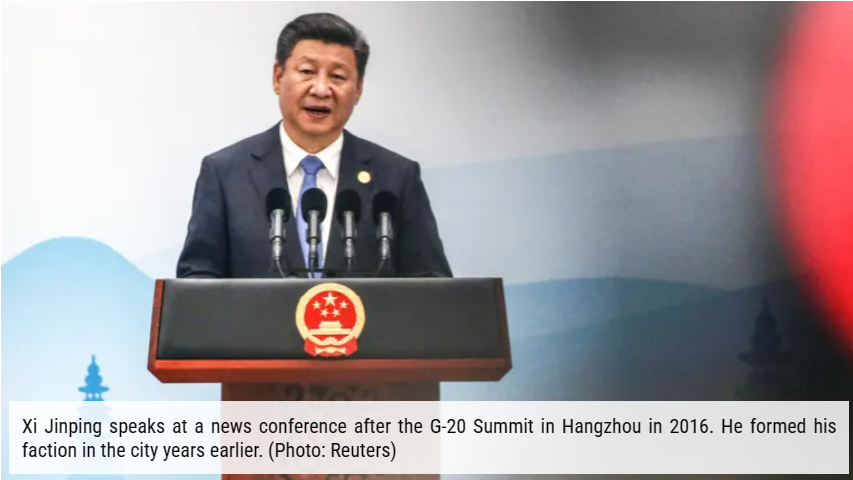
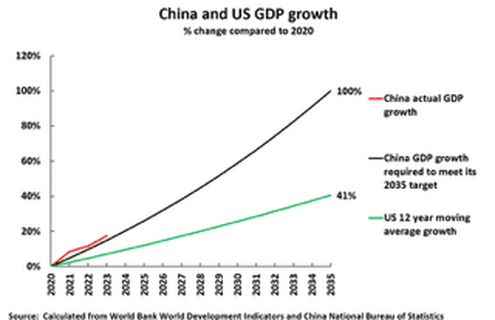
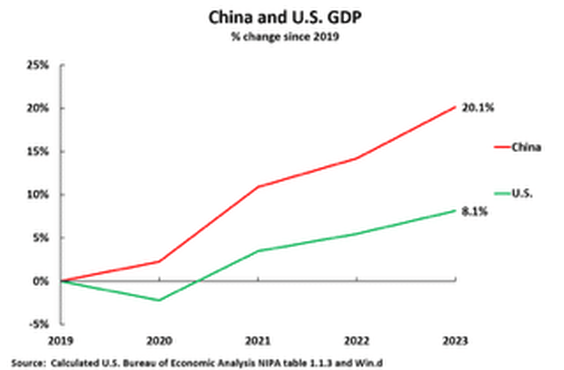
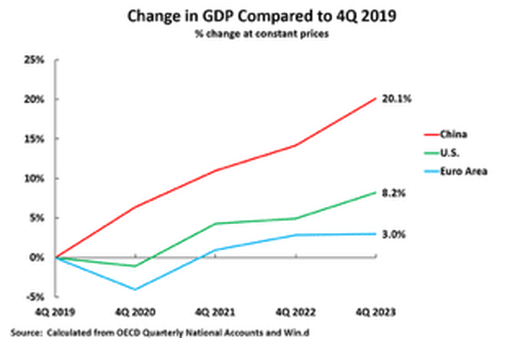
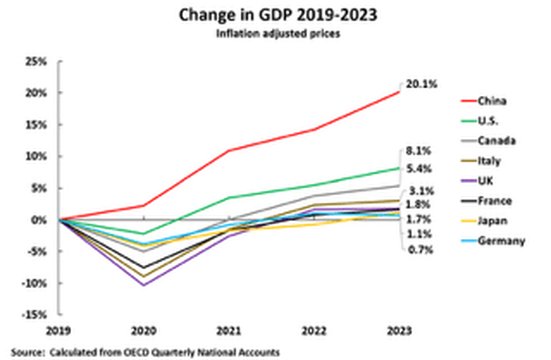
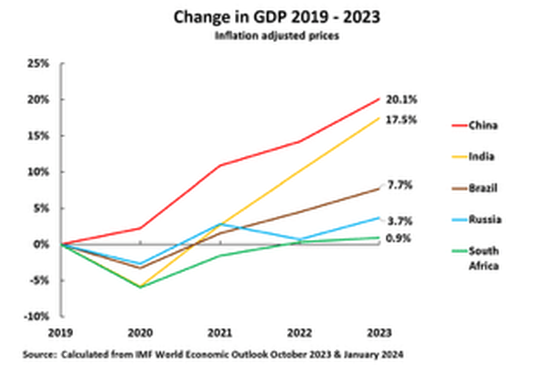
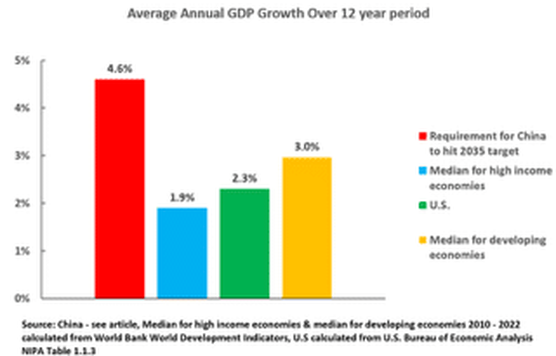
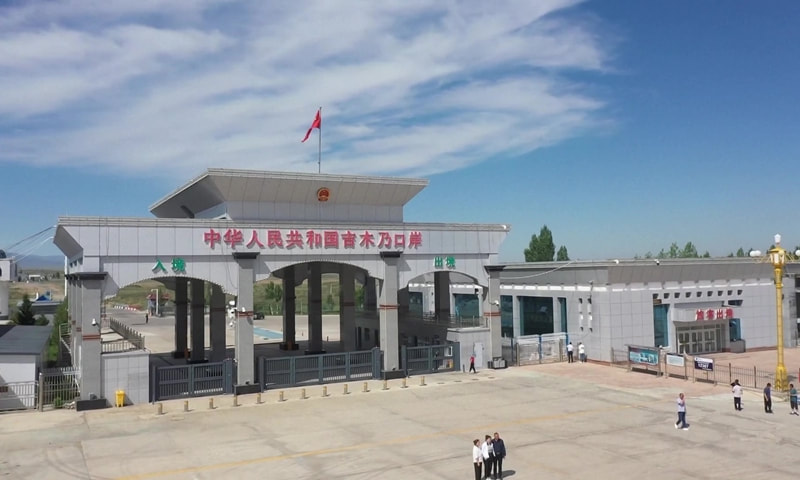
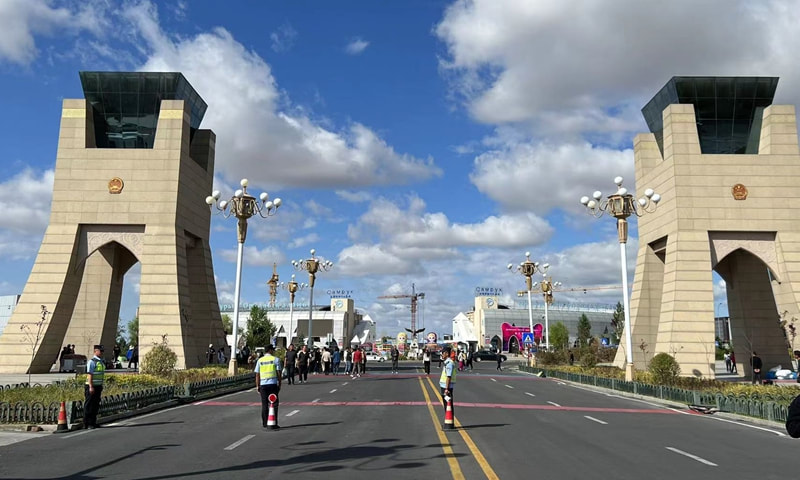
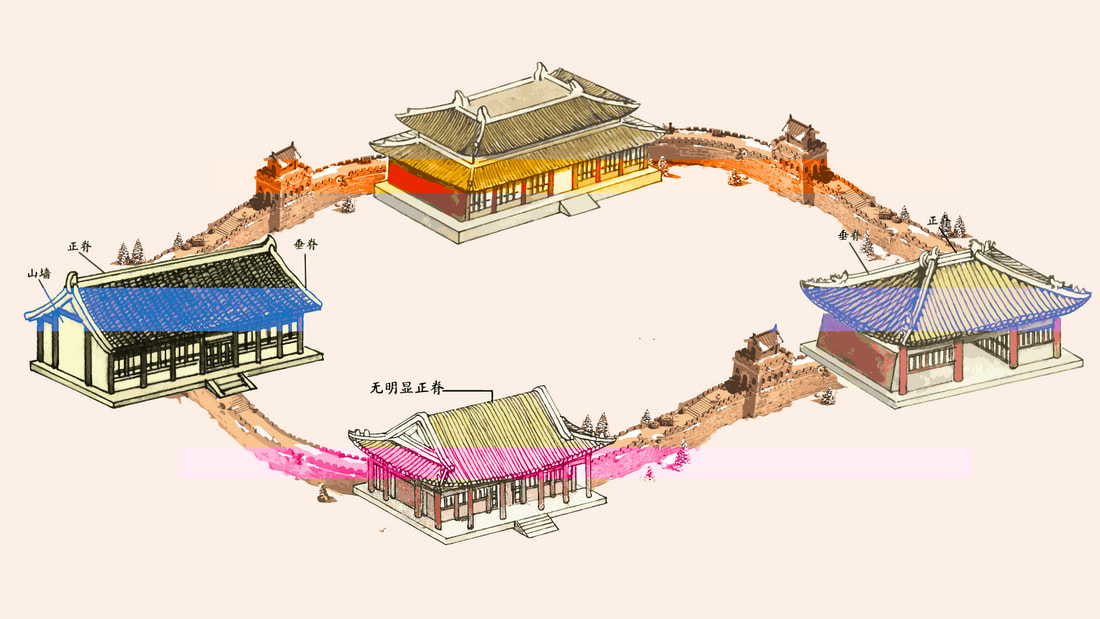
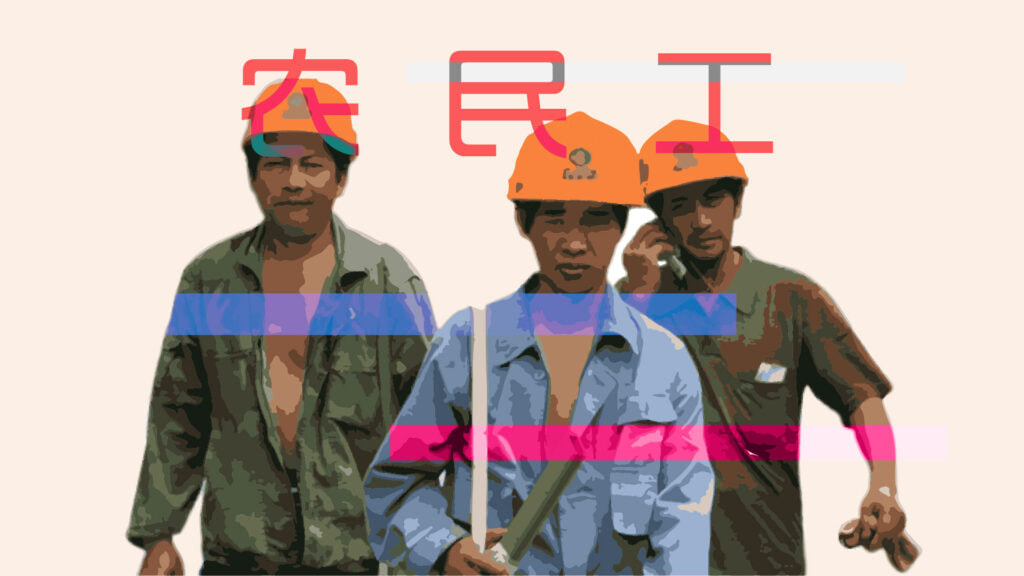

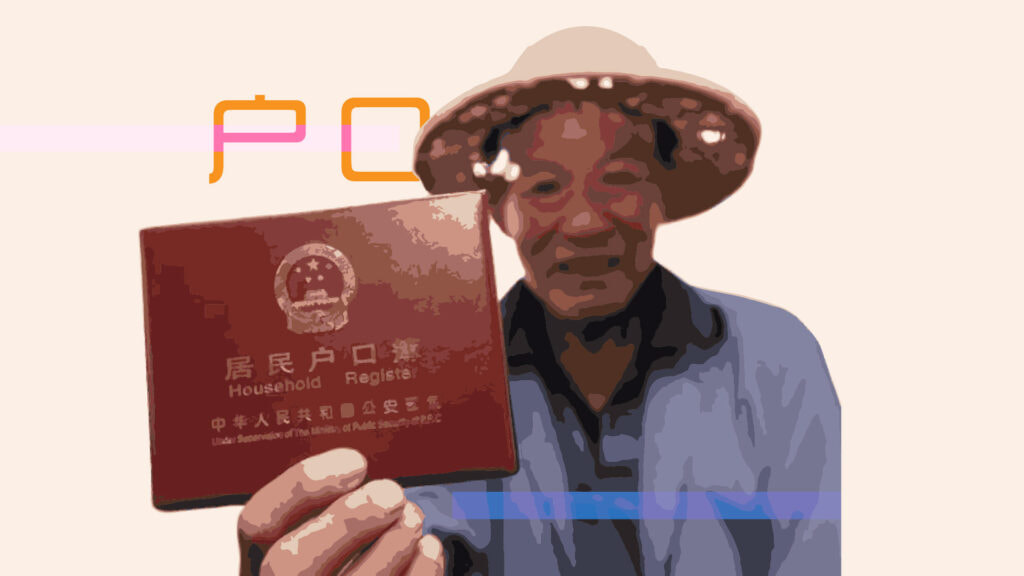

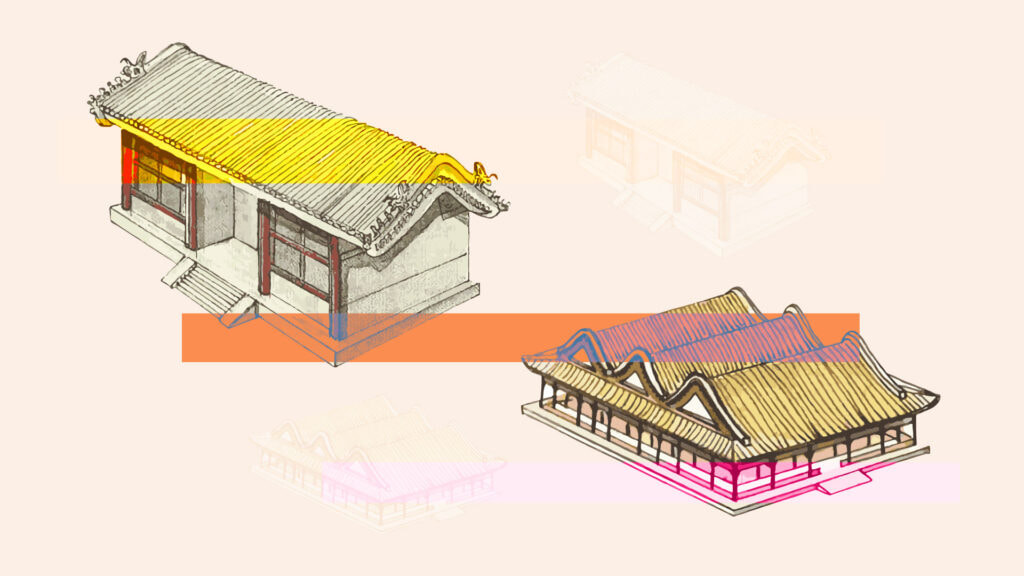
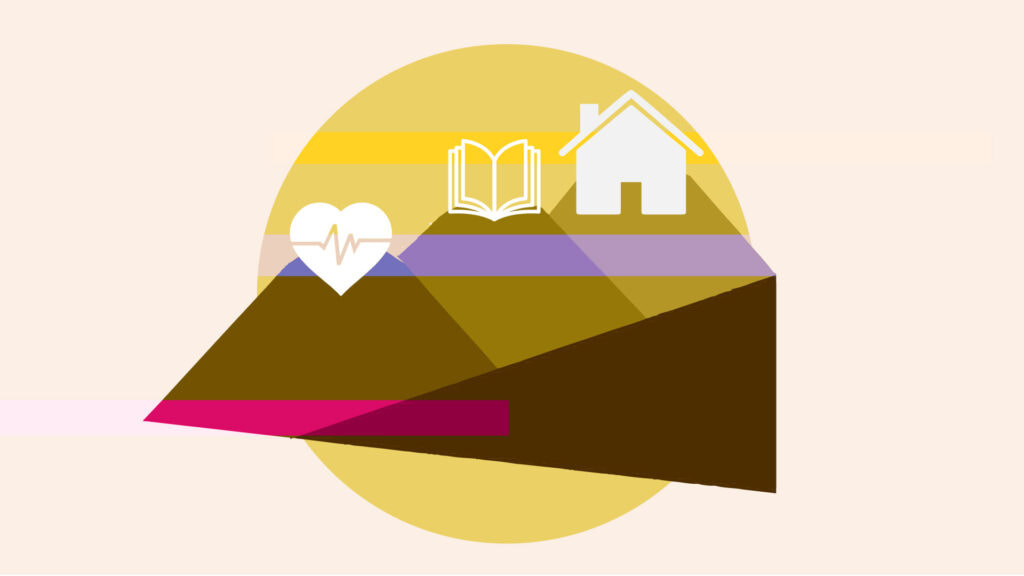
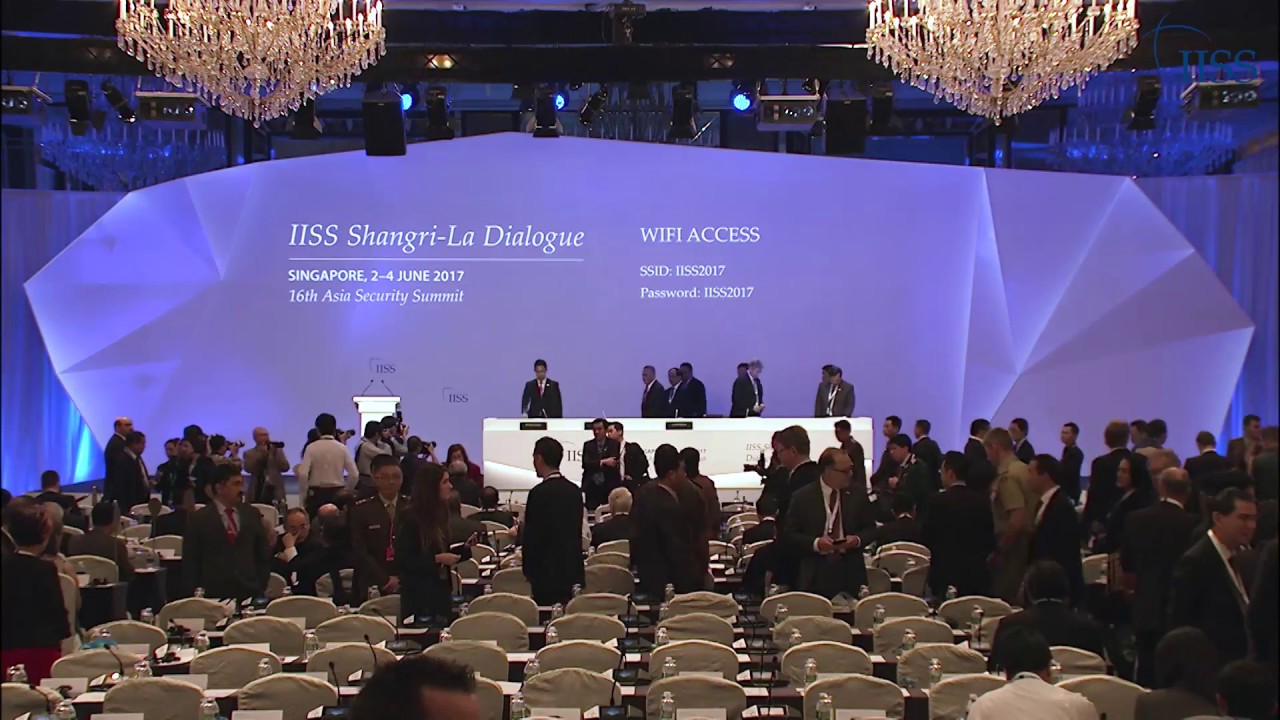
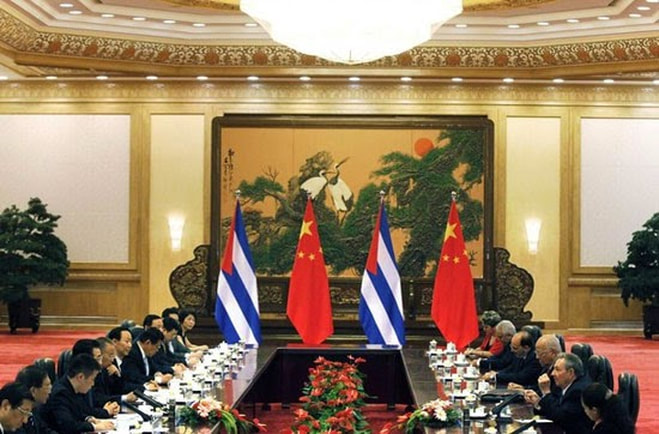
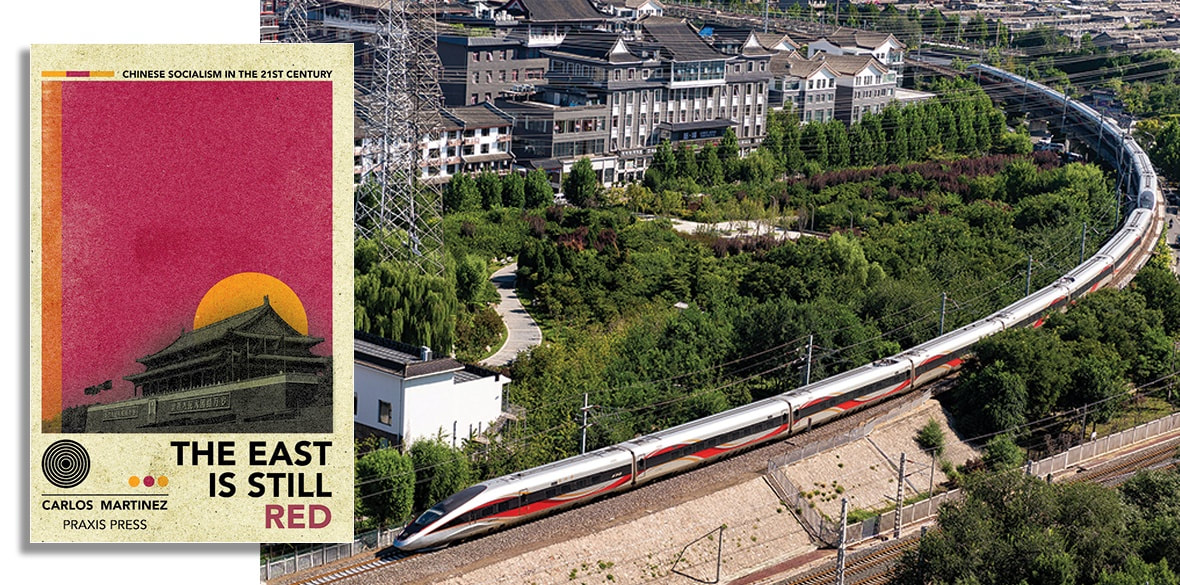
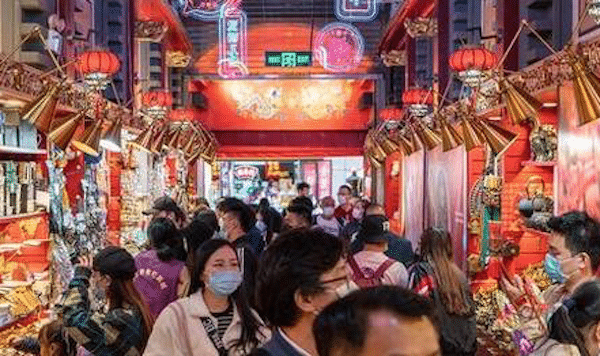
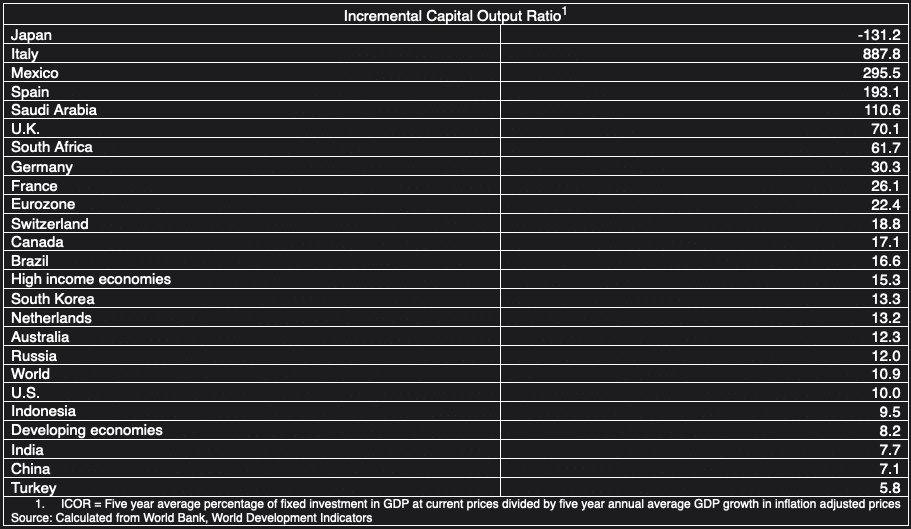
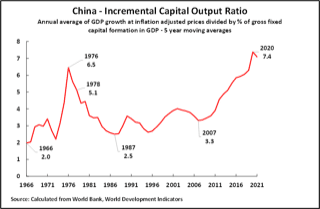
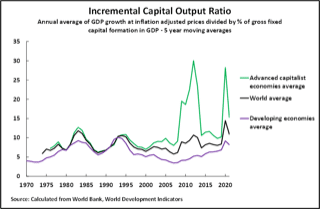
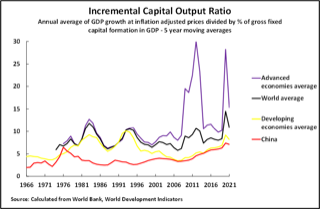
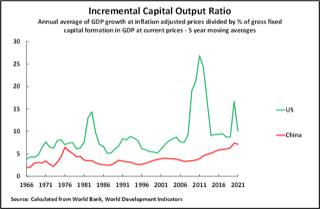
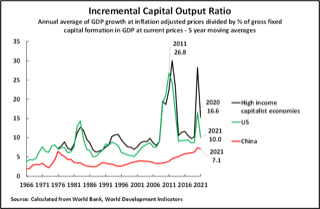
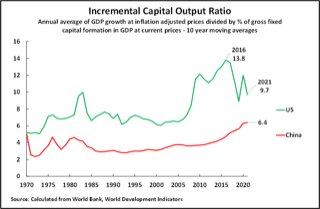
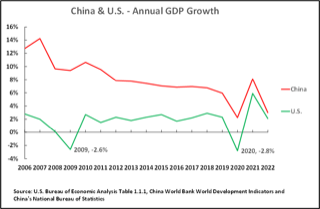
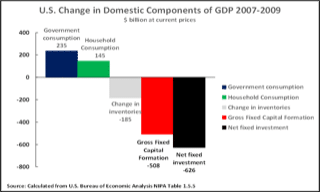
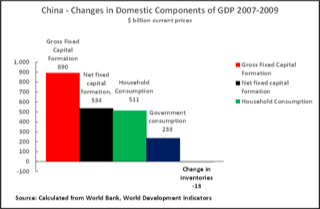
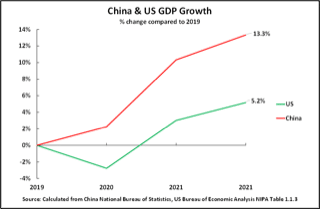
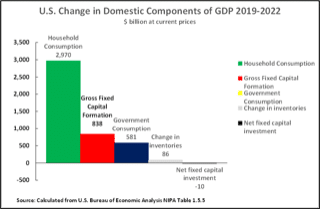
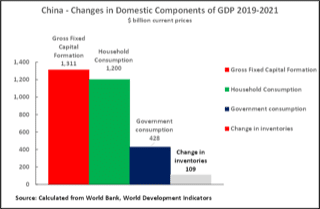
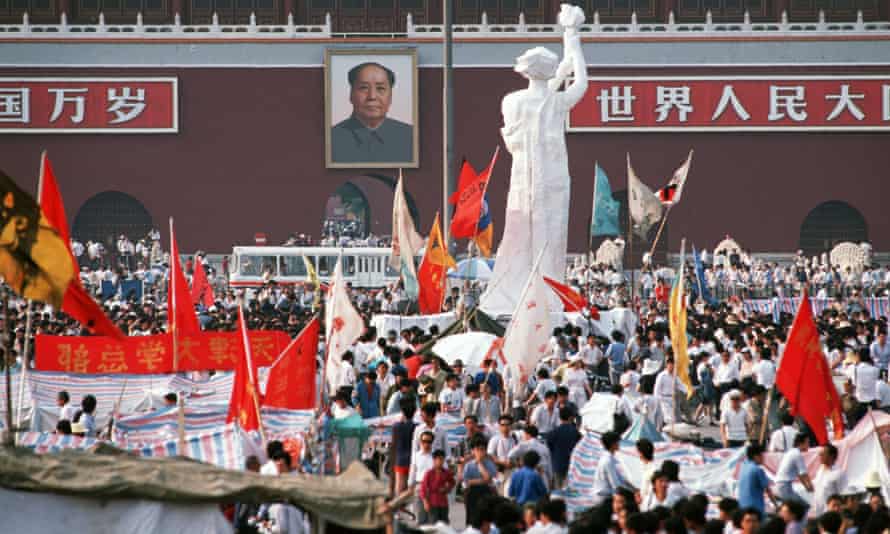
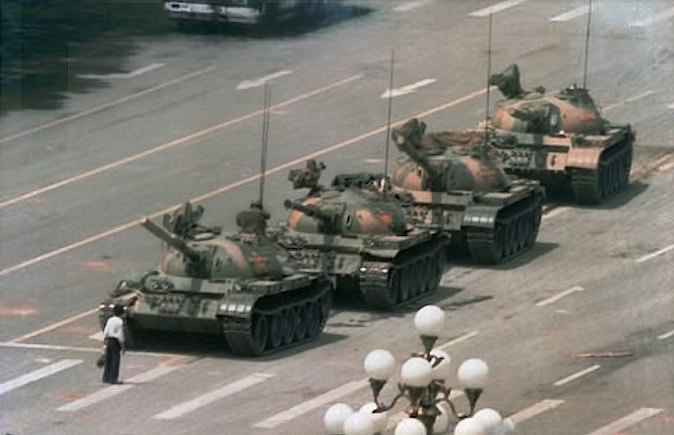
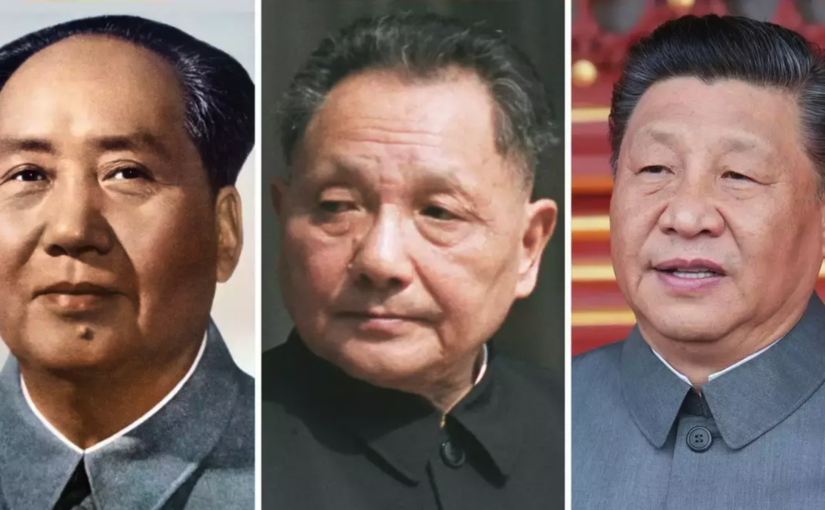
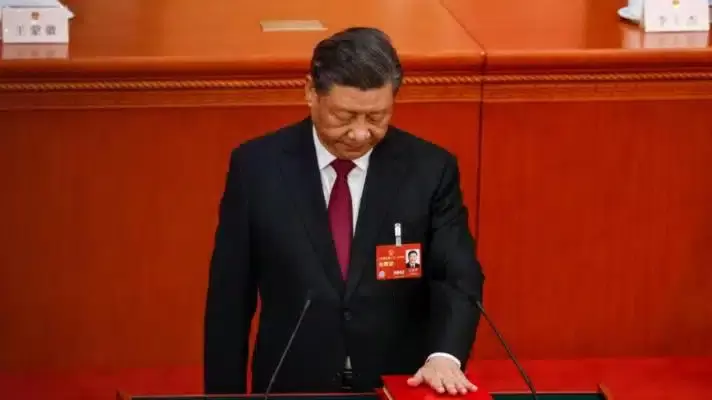
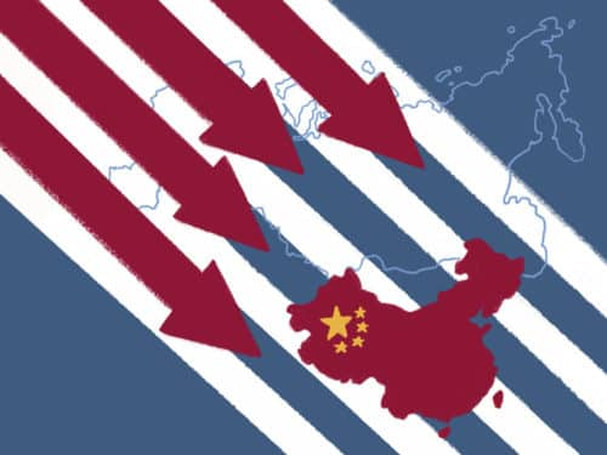
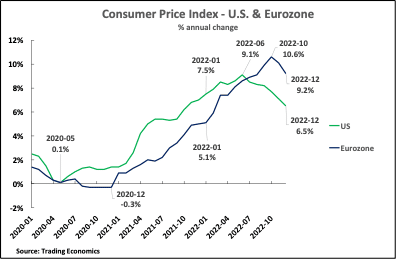
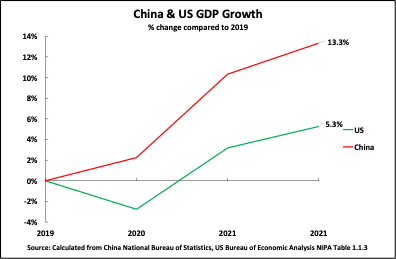
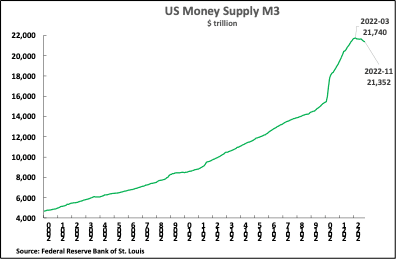
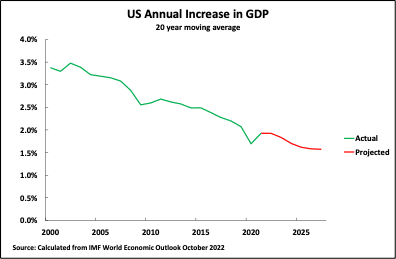
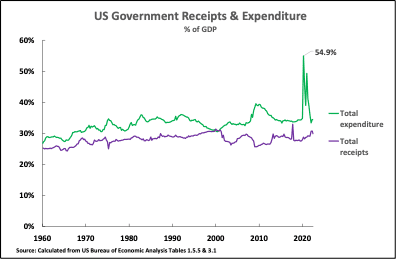
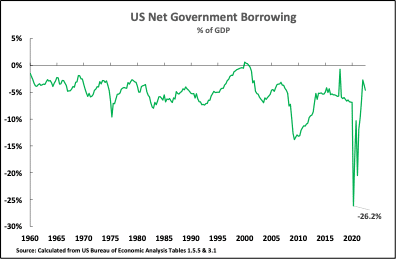
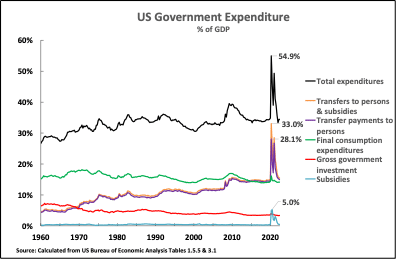
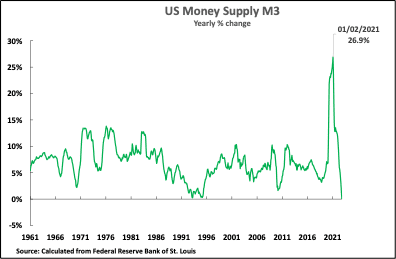
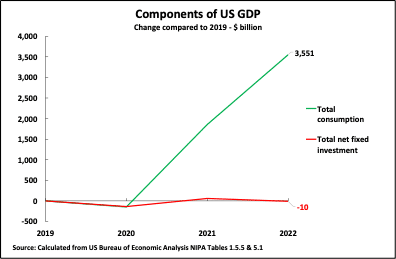
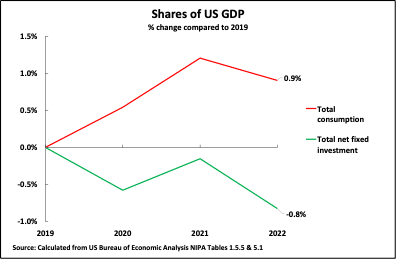
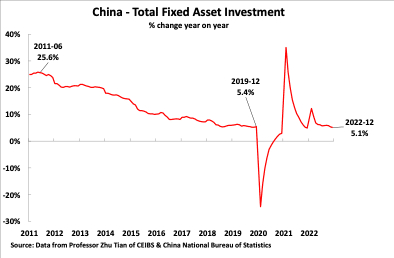
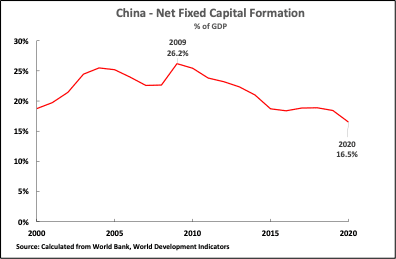
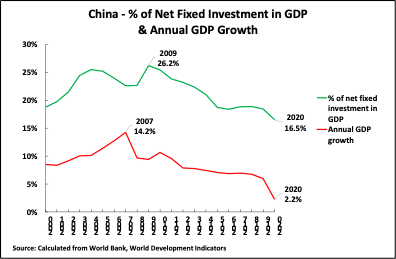
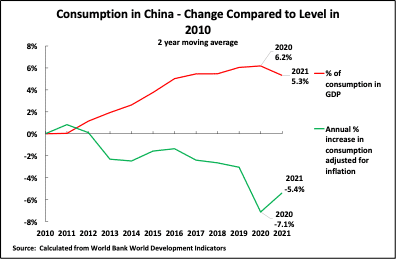
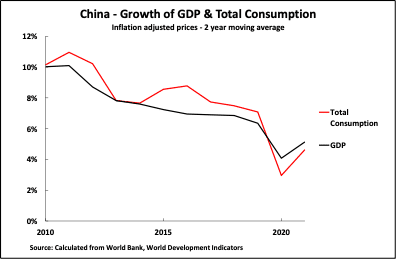
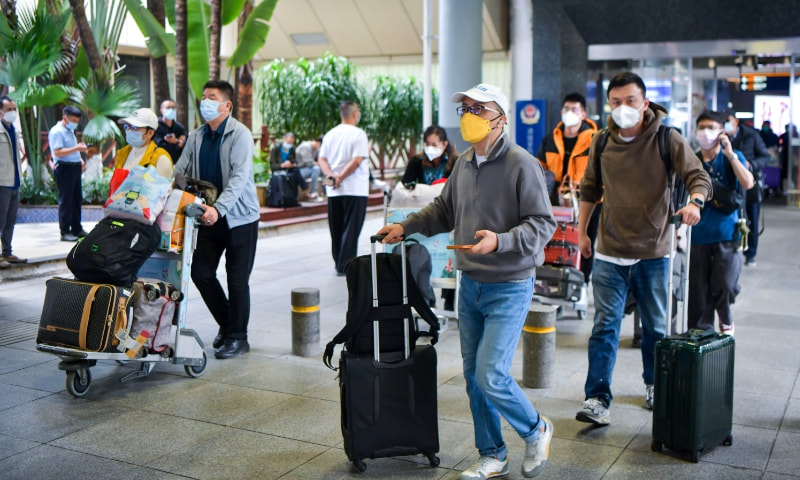
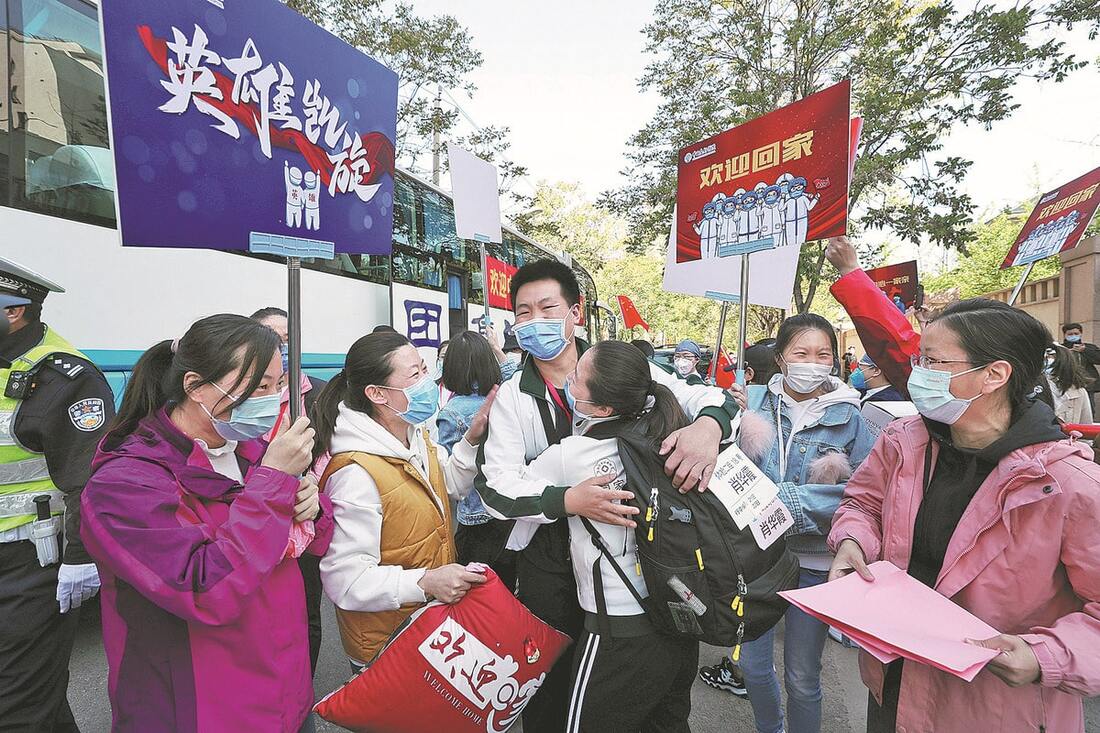
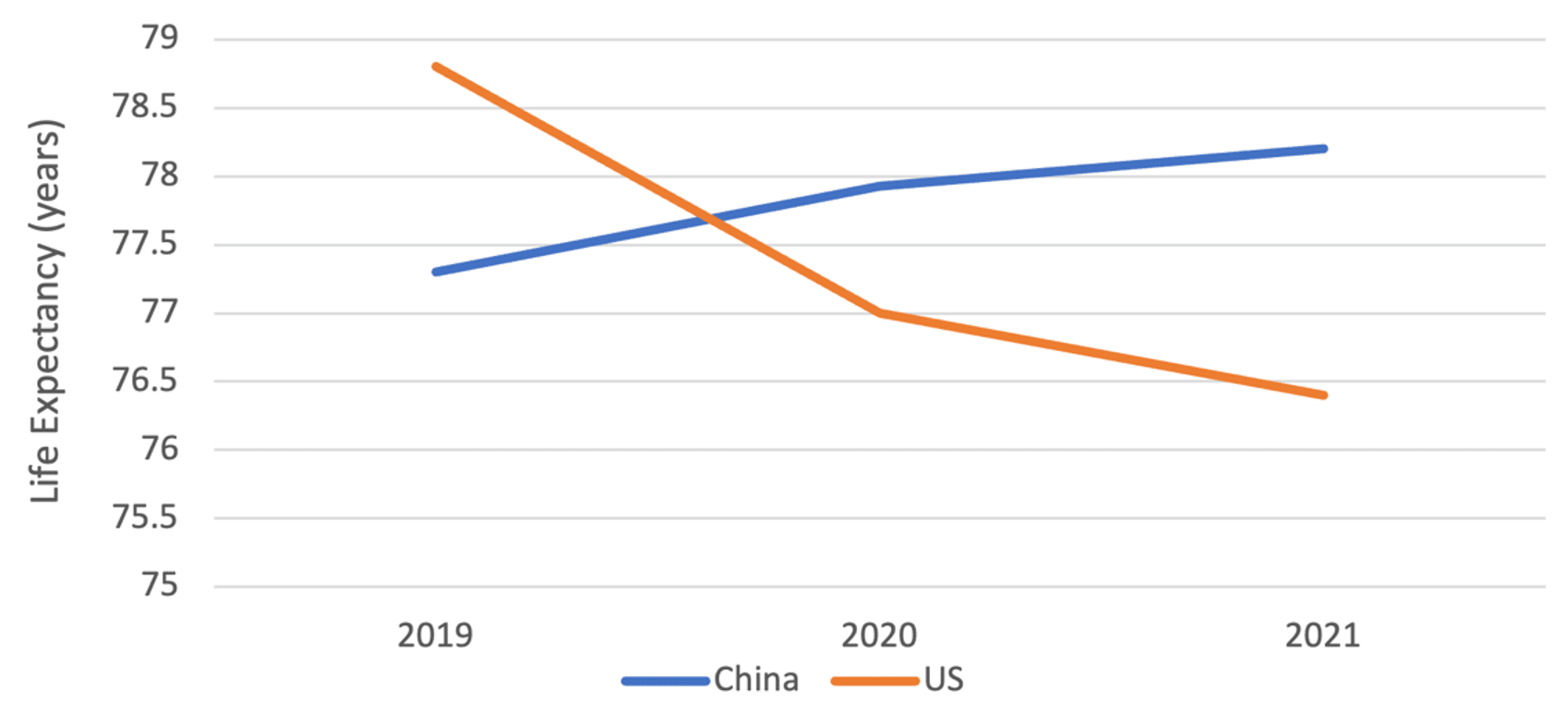
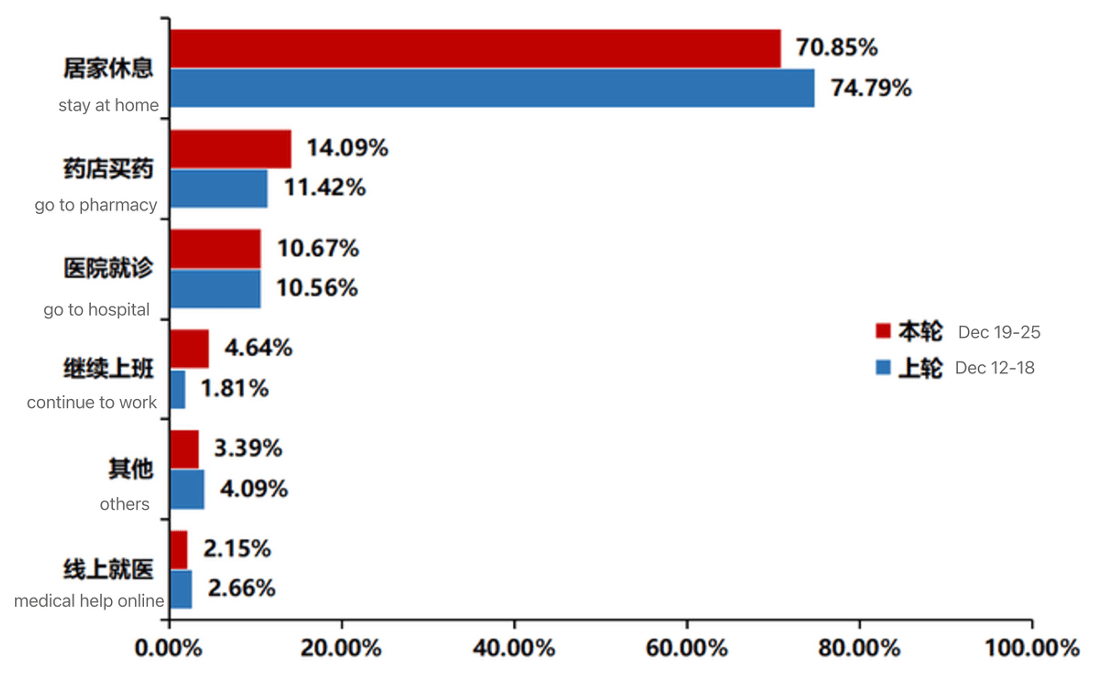
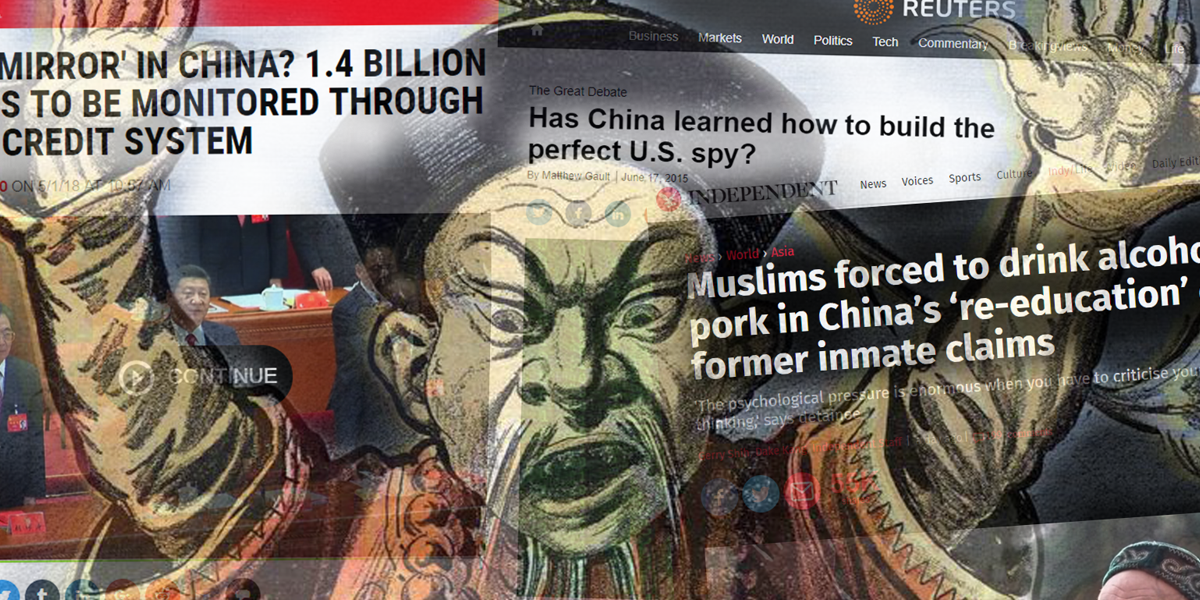
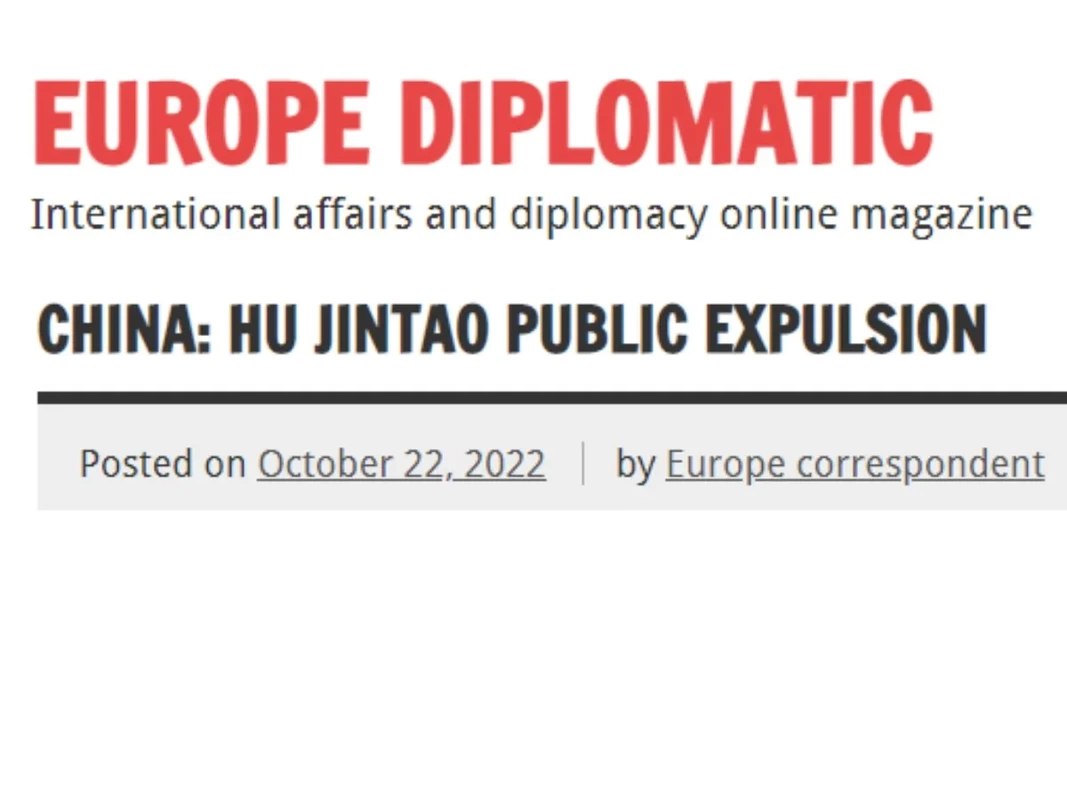
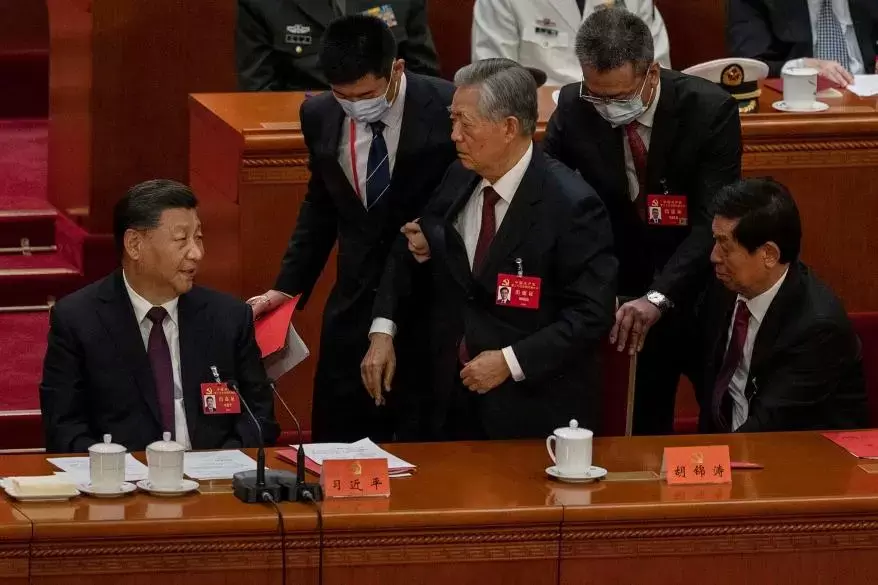
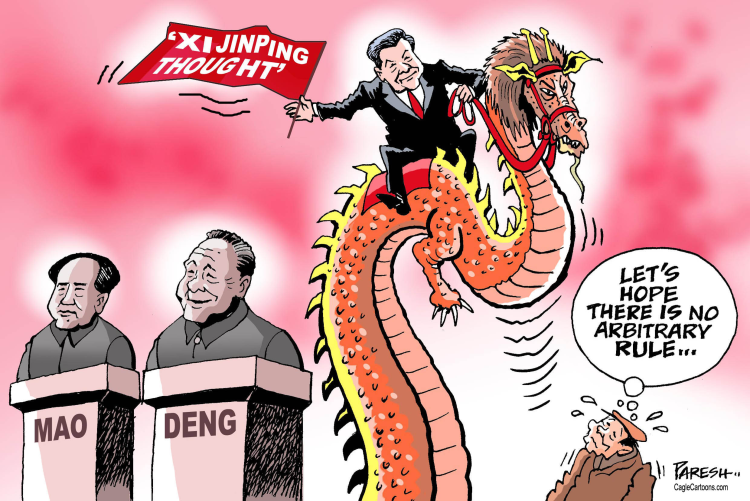

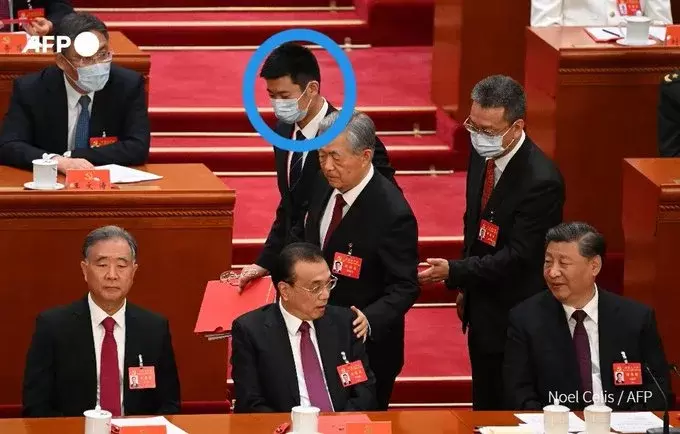












 RSS Feed
RSS Feed